Best Festivals in Peru
Corpus Christi is one of the biggest and most popular celebrations in Cusco.
Peru has some truly fabulous celebrations!
From Carnival in Cajamarca to the re-enactment of the Battle of Ayacucho, Peruvians go all out for every festival and celebration. Plan your trip to Peru around any of these events and you won’t be disappointed!
Here are four of my favorite yearly events near Cusco.
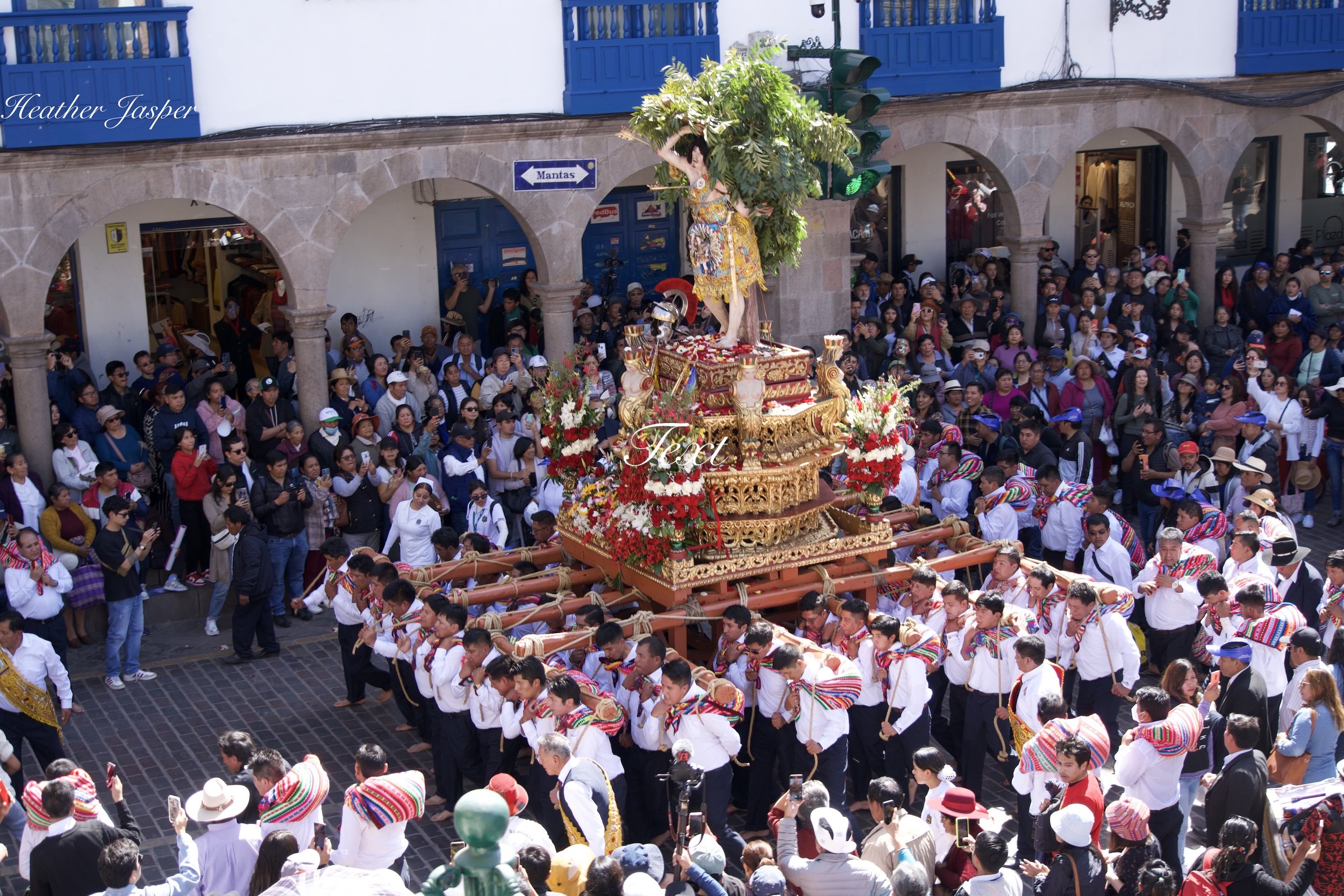
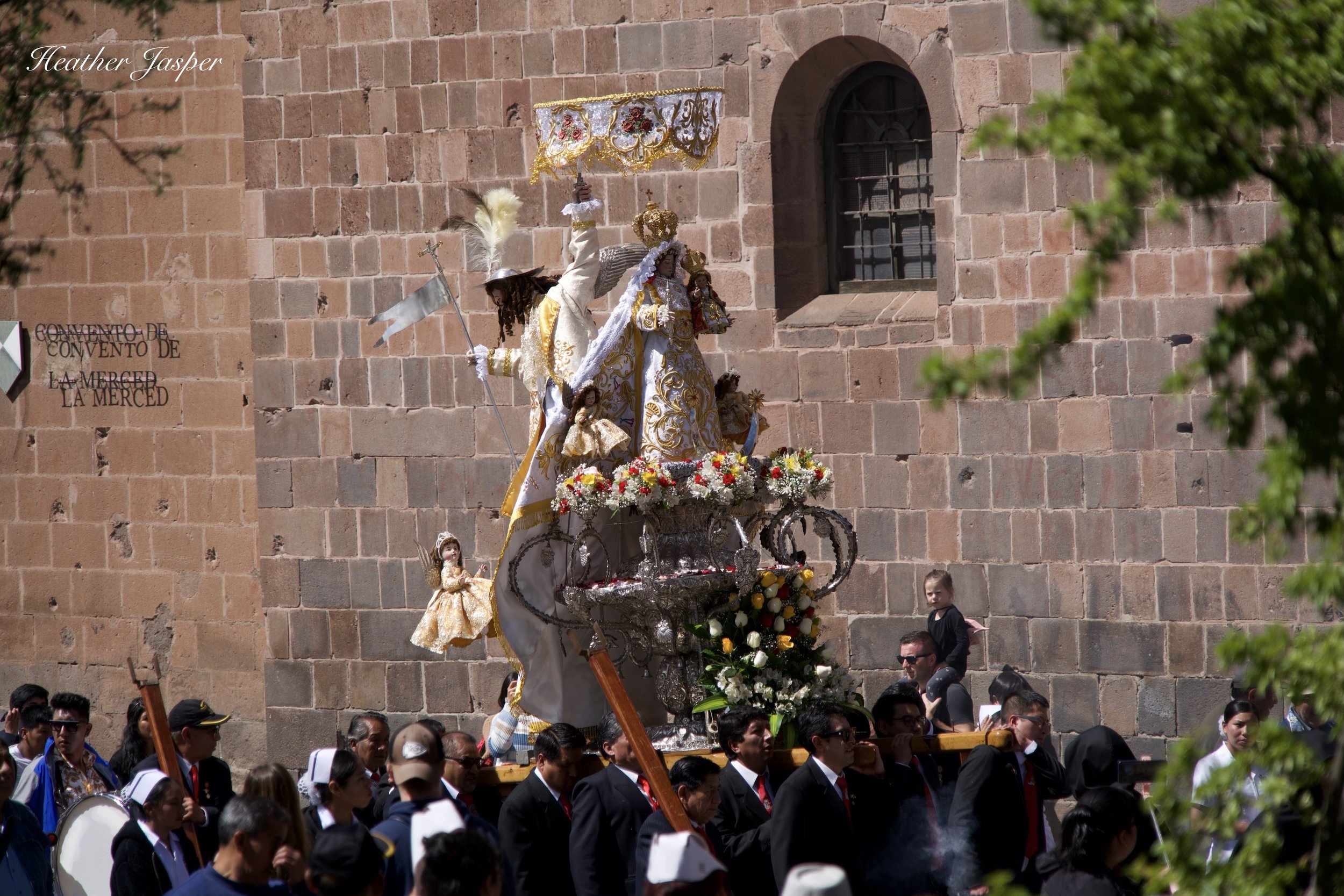

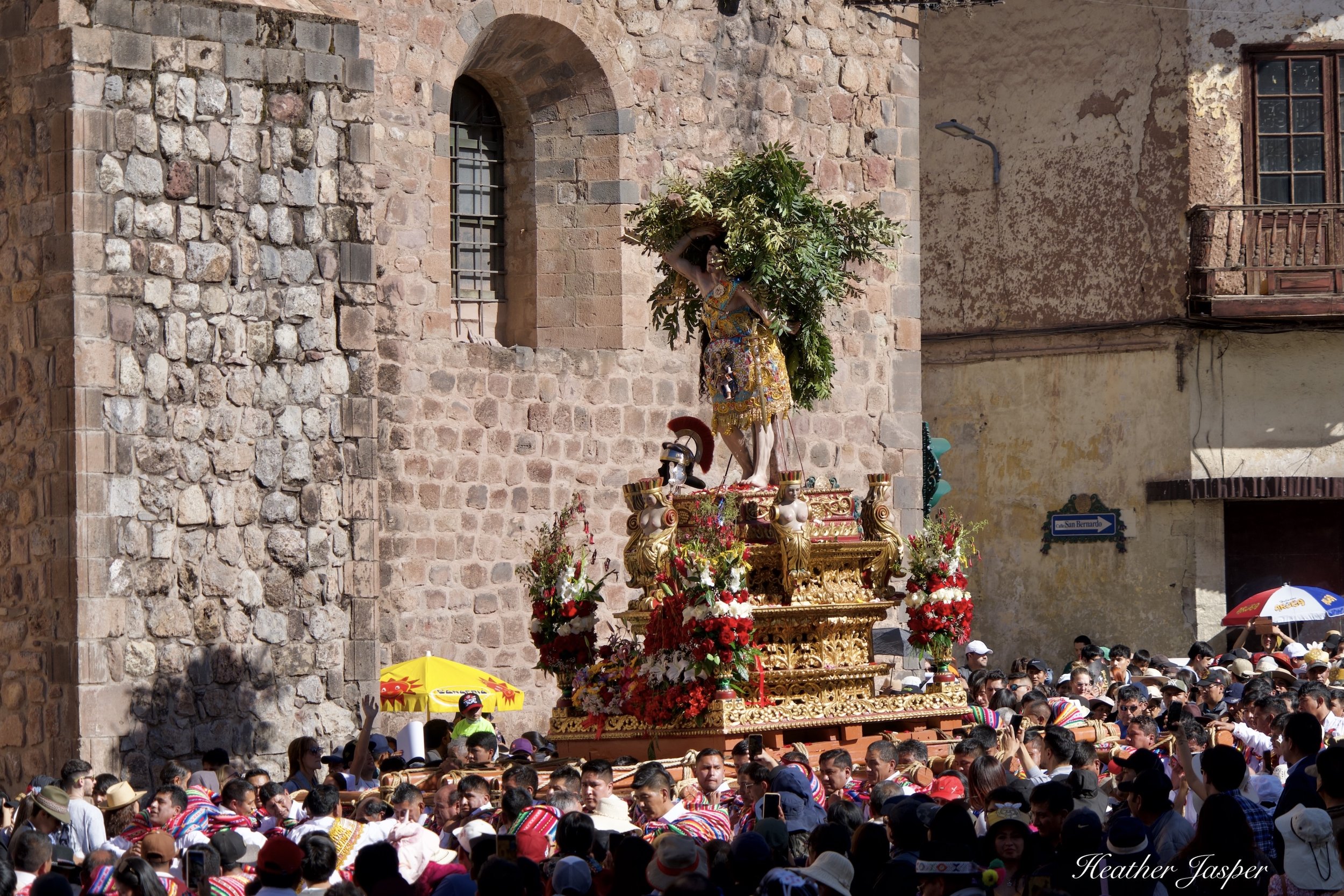
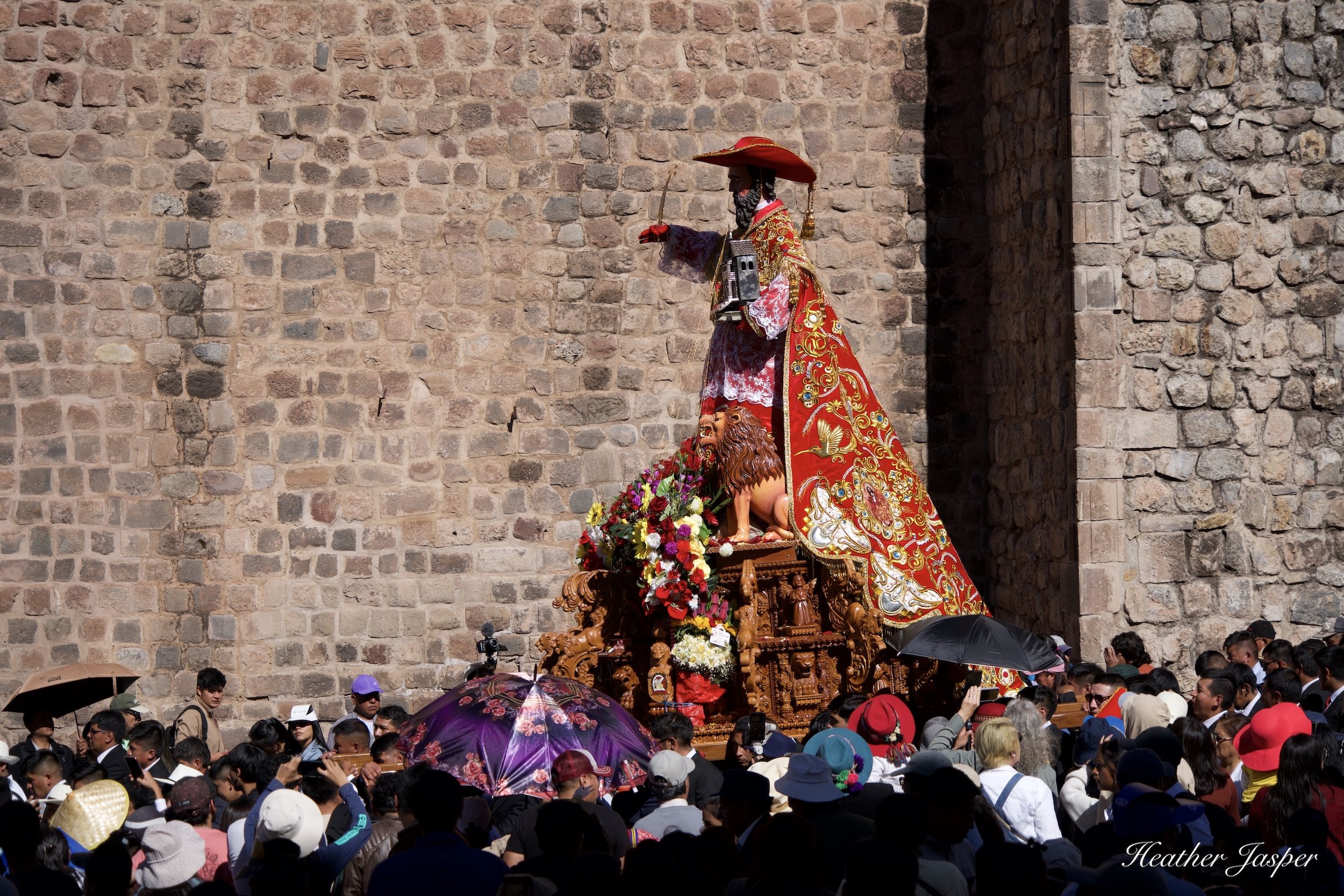
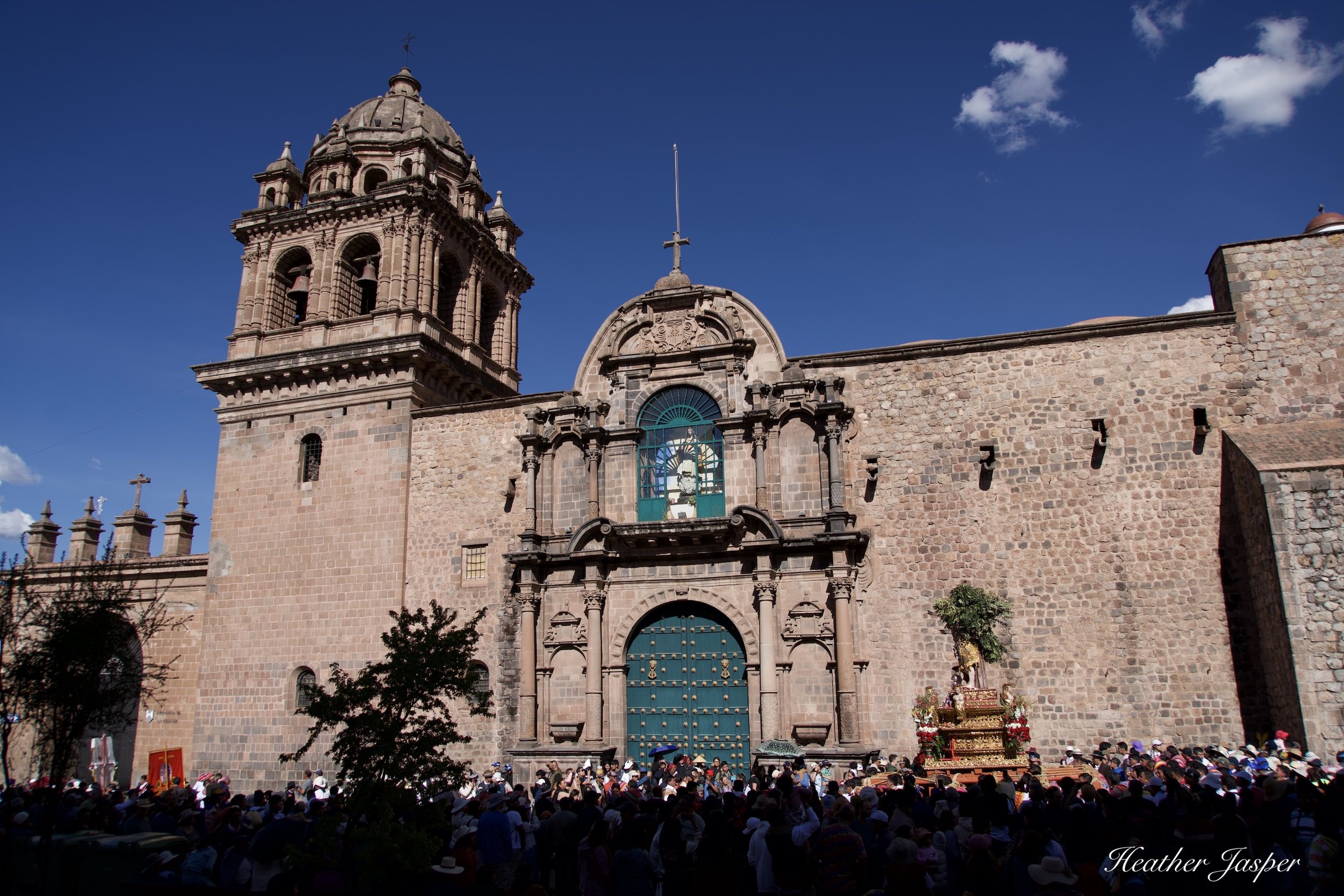
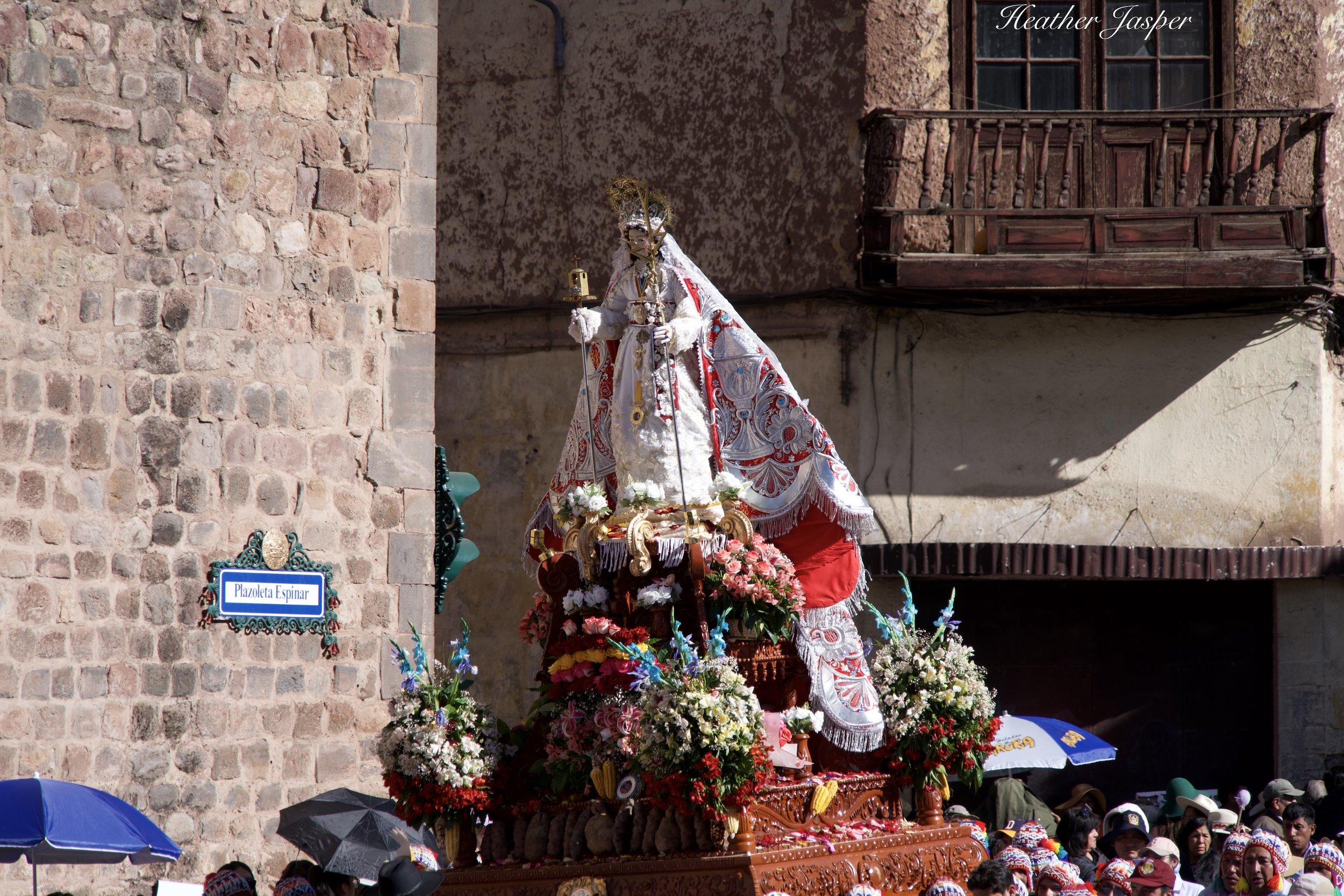
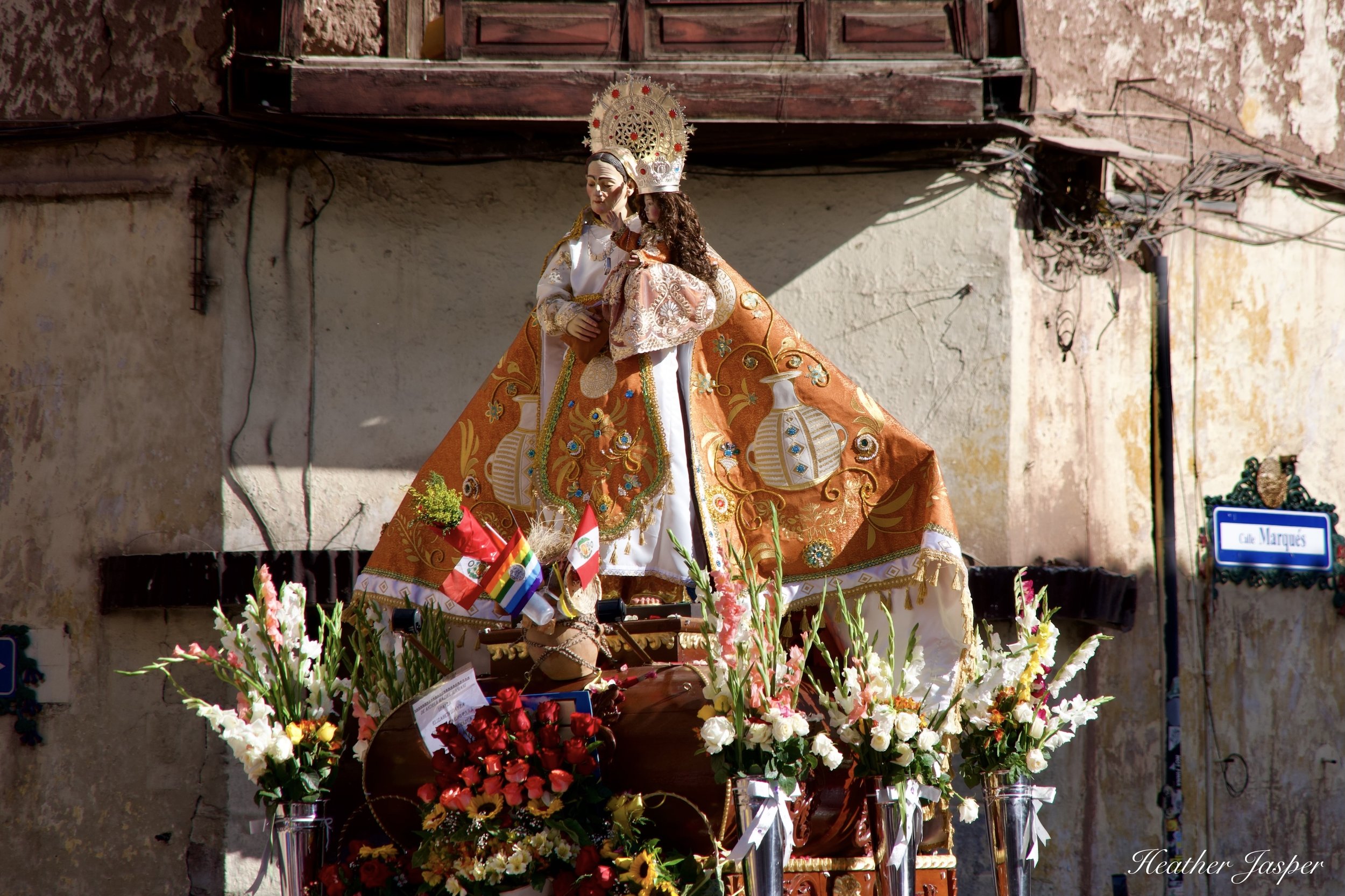
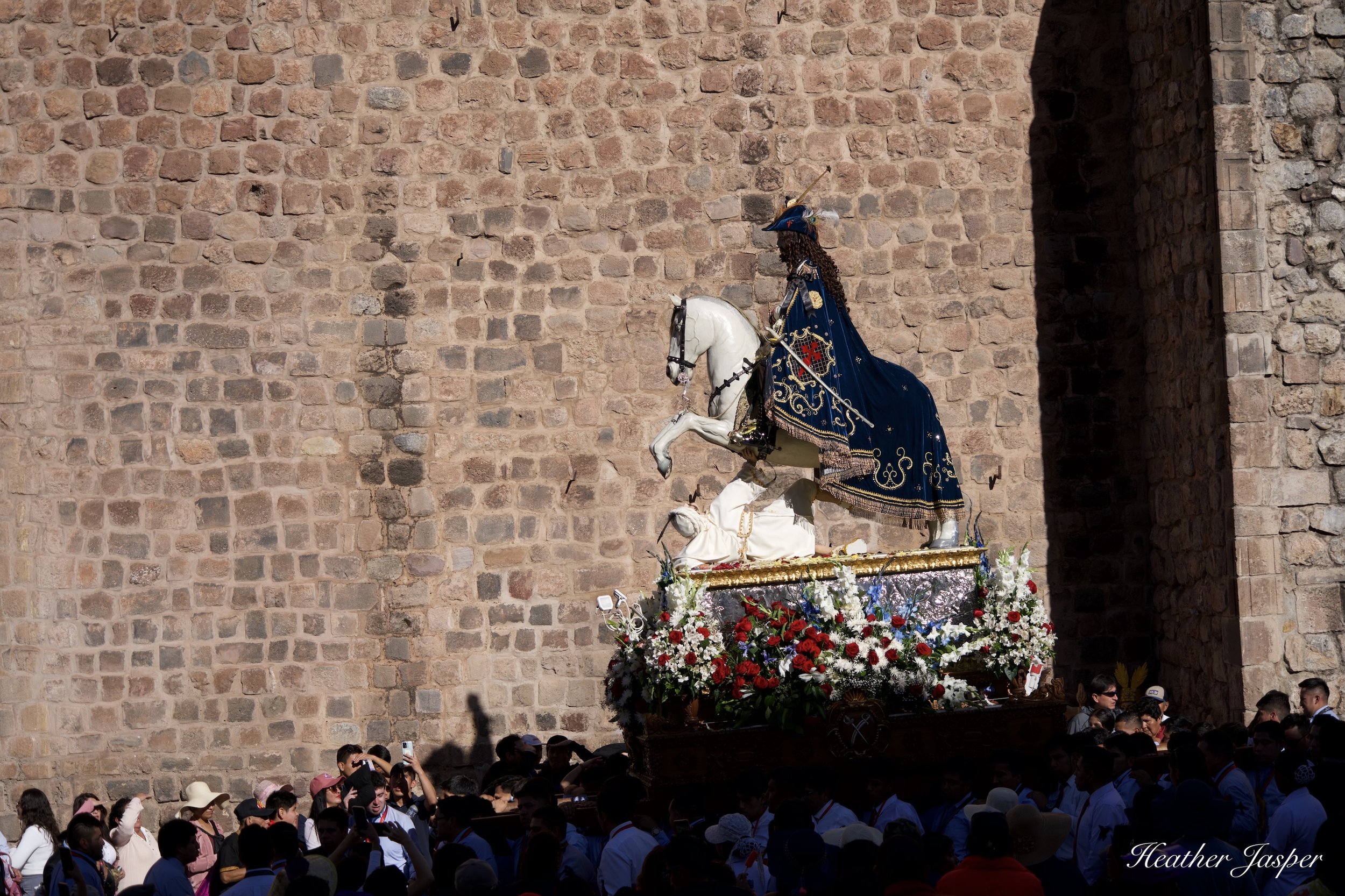
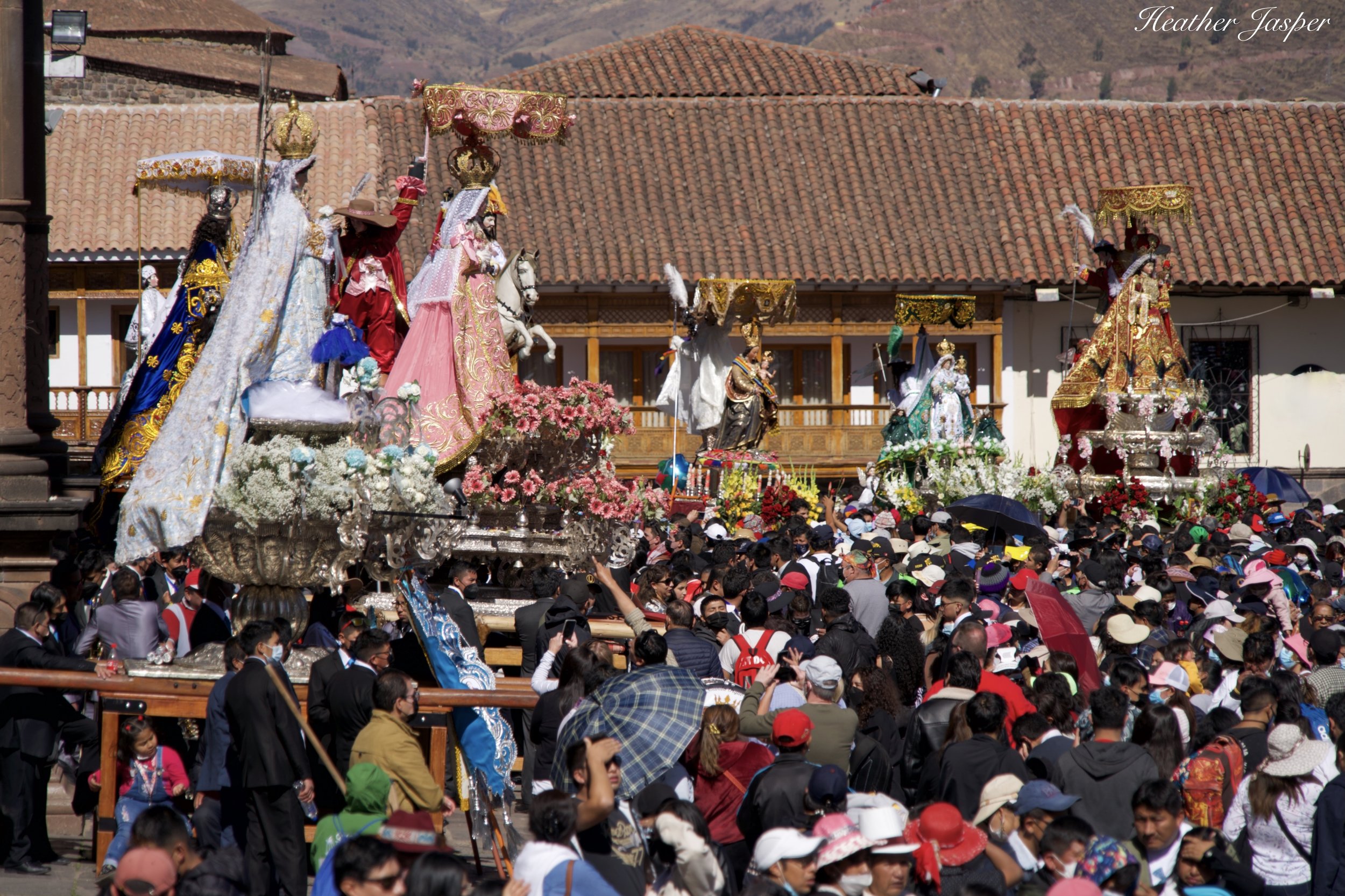
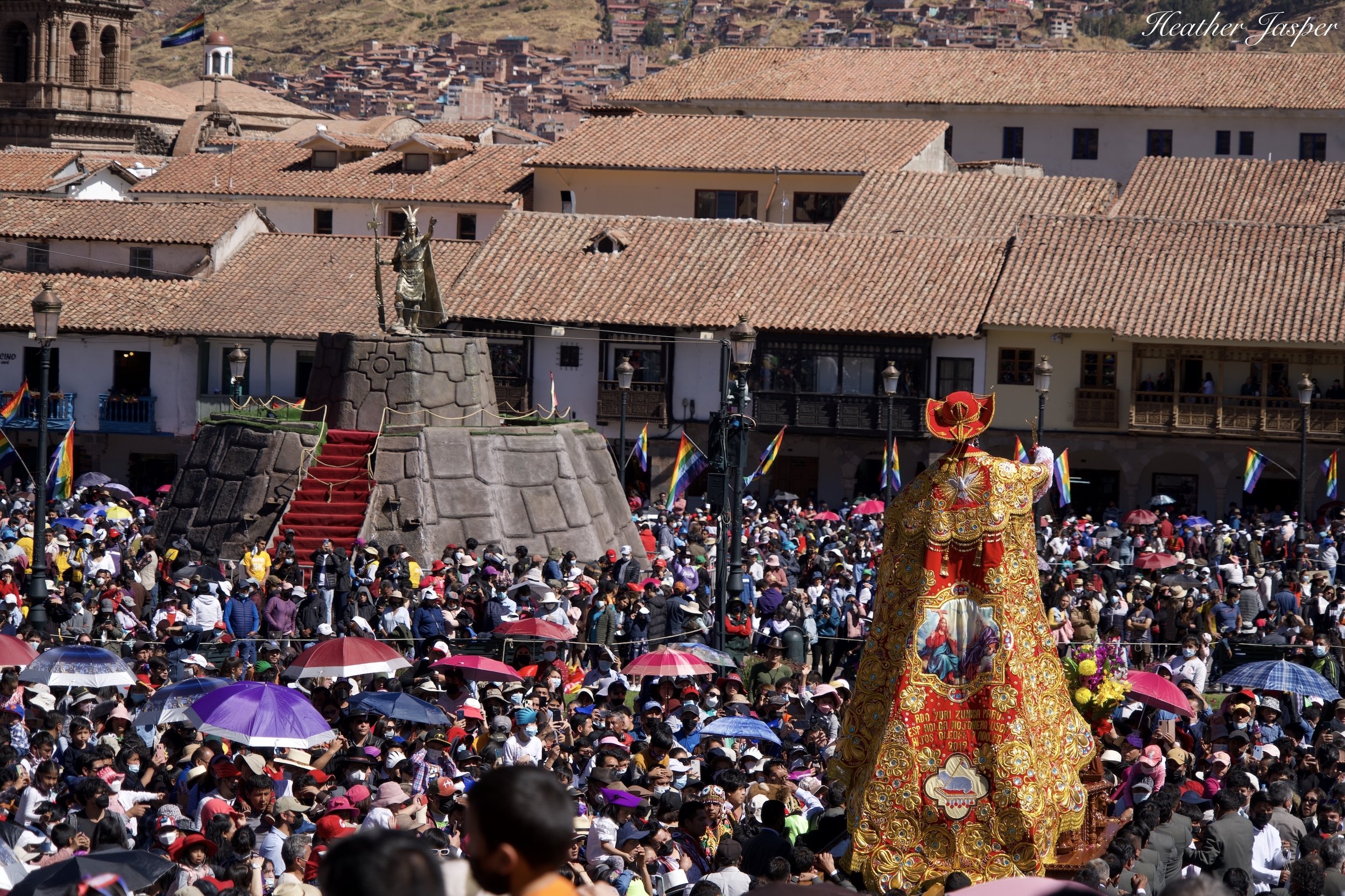
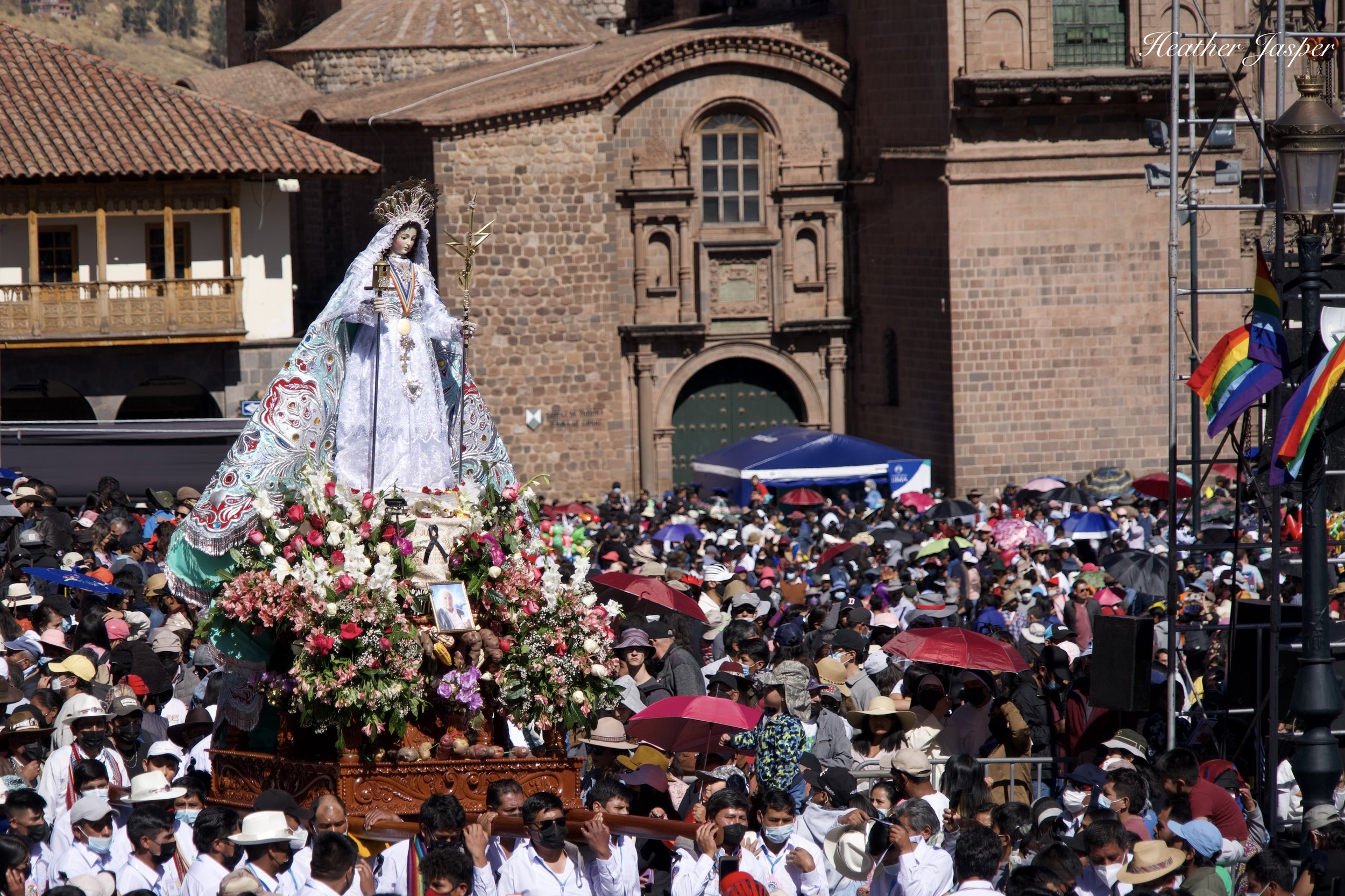
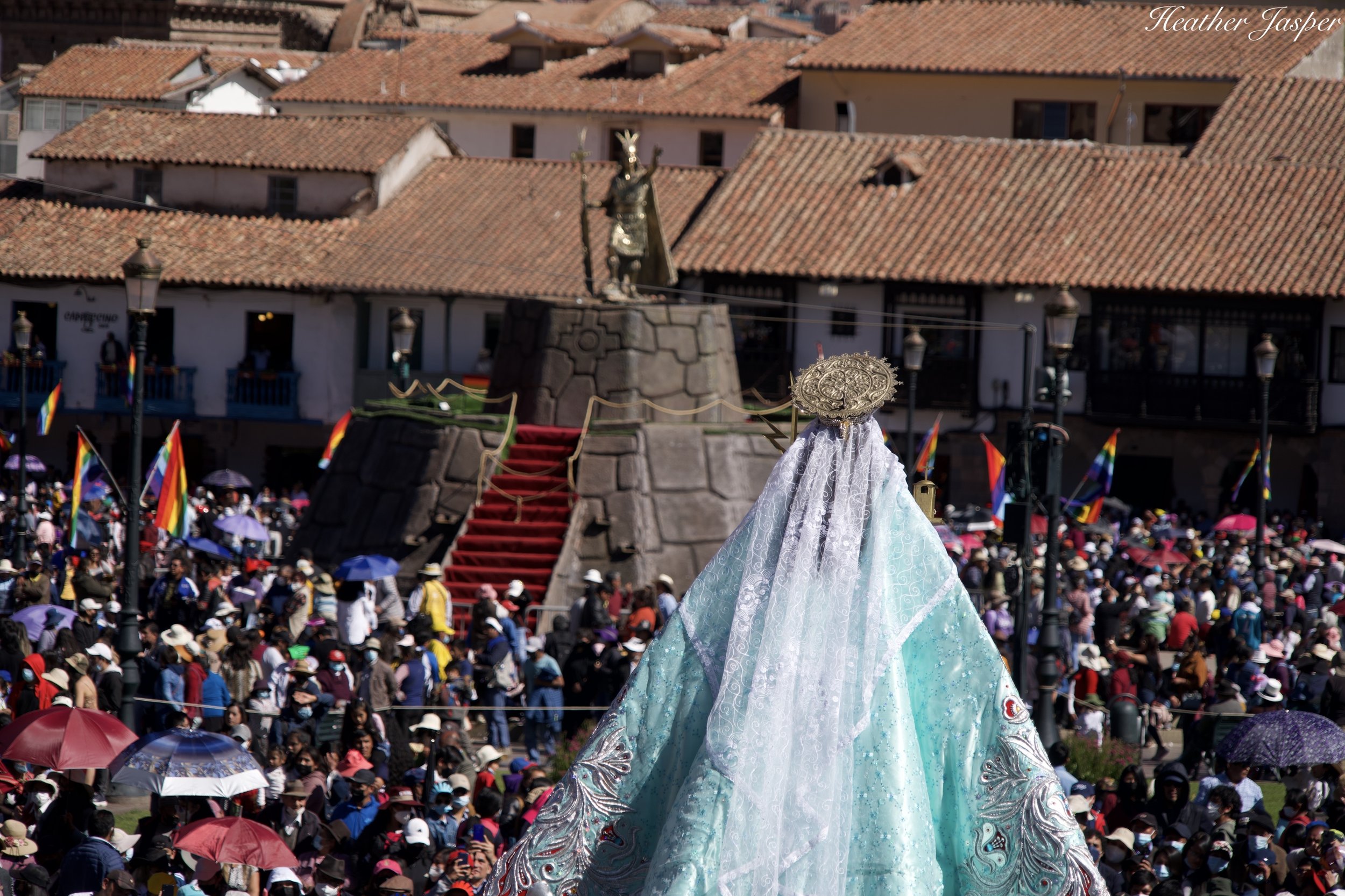
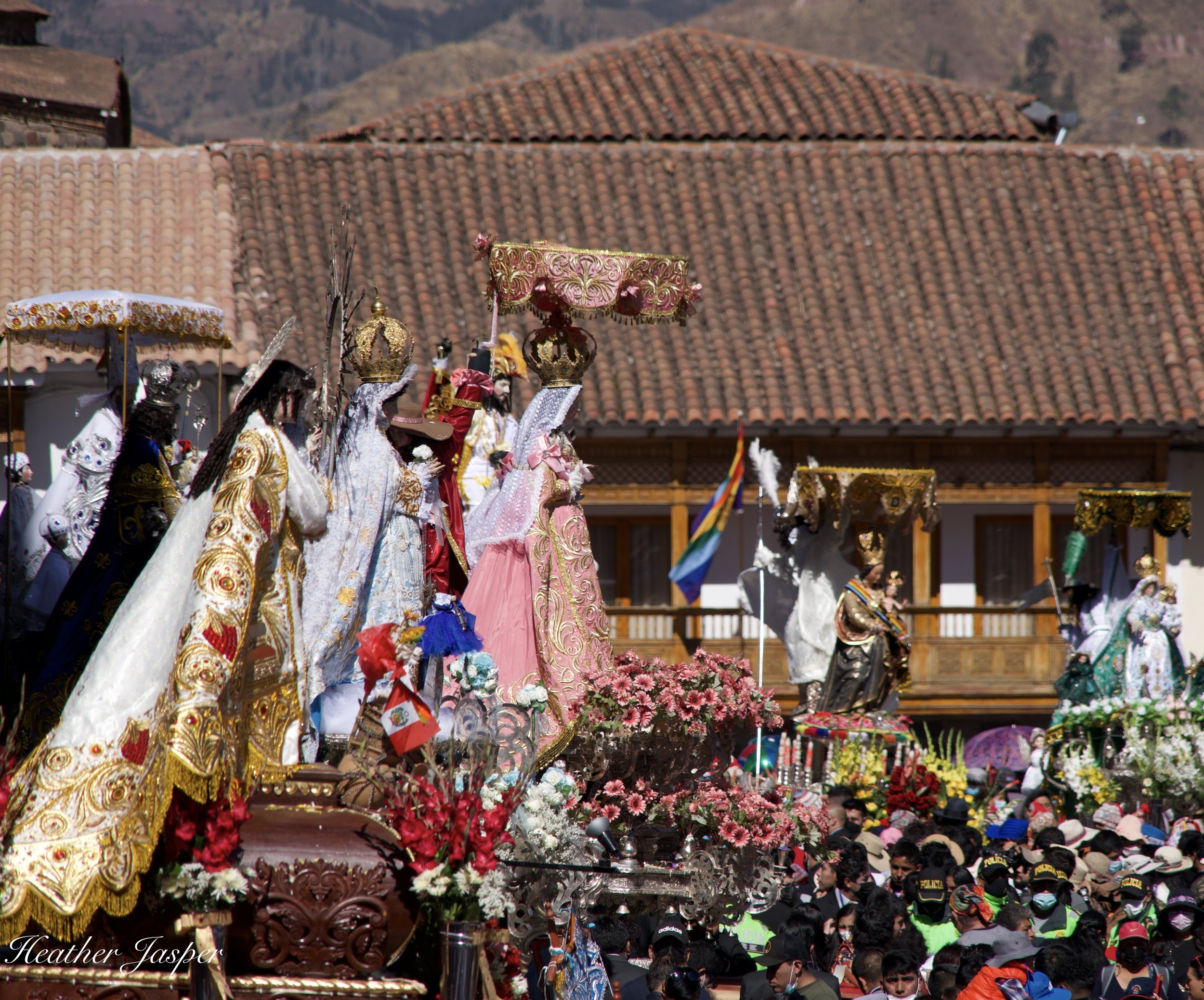
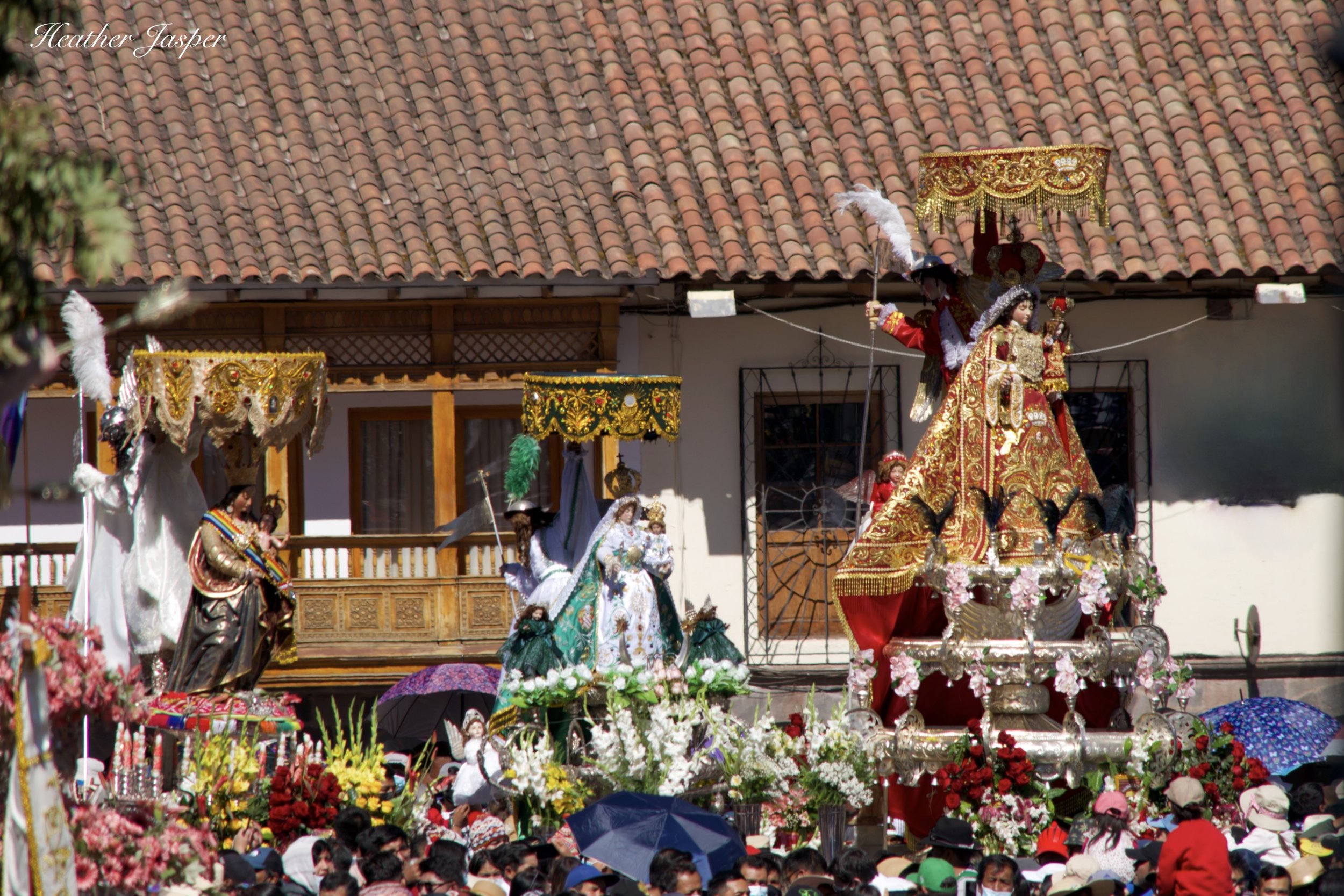
Corpus Christi
Corpus Christi is 60 days after Easter, so the date changes but is easy to calculate each year.
Cusco’s celebration of Corpus Christi is unique because it mirrors Inca celebrations. The morning of Corpus Christi, the patron Saints and Virgins of the major churches in Cusco are carried to the historic center and paraded up to the Santa Clara arch, then down to the Plaza de Armas. They circle the Plaza de Armas before going back to their church.
This mimics the Inca’s tradition of housing the mummies of past Incas in their family’s palaces or temples. After the Sapa Inca (Inca ruler) died, he was mummified and then maintained by his family. He retained ownership of all his lands and palaces and in many ways was considered to still be living. For important ceremonies, the mummies were brought to what is today the Plaza de Armas and paraded around, much as today’s statues of Saints and Virgins are. Many of the statues of the Virgin have a round parasol protecting her from the sun, as the Qoya, the Inca’s Queen, used to have when she was carried around.
Also unique to Cusco, you’ll see many people from small villages come to the big city wearing their traditional colorful ponchos and hats. There are also some of the same Andean dances that are present at the Festividad de la Virgen del Carmen in Paucartambo (below). Read my Corpus Christi blog here.
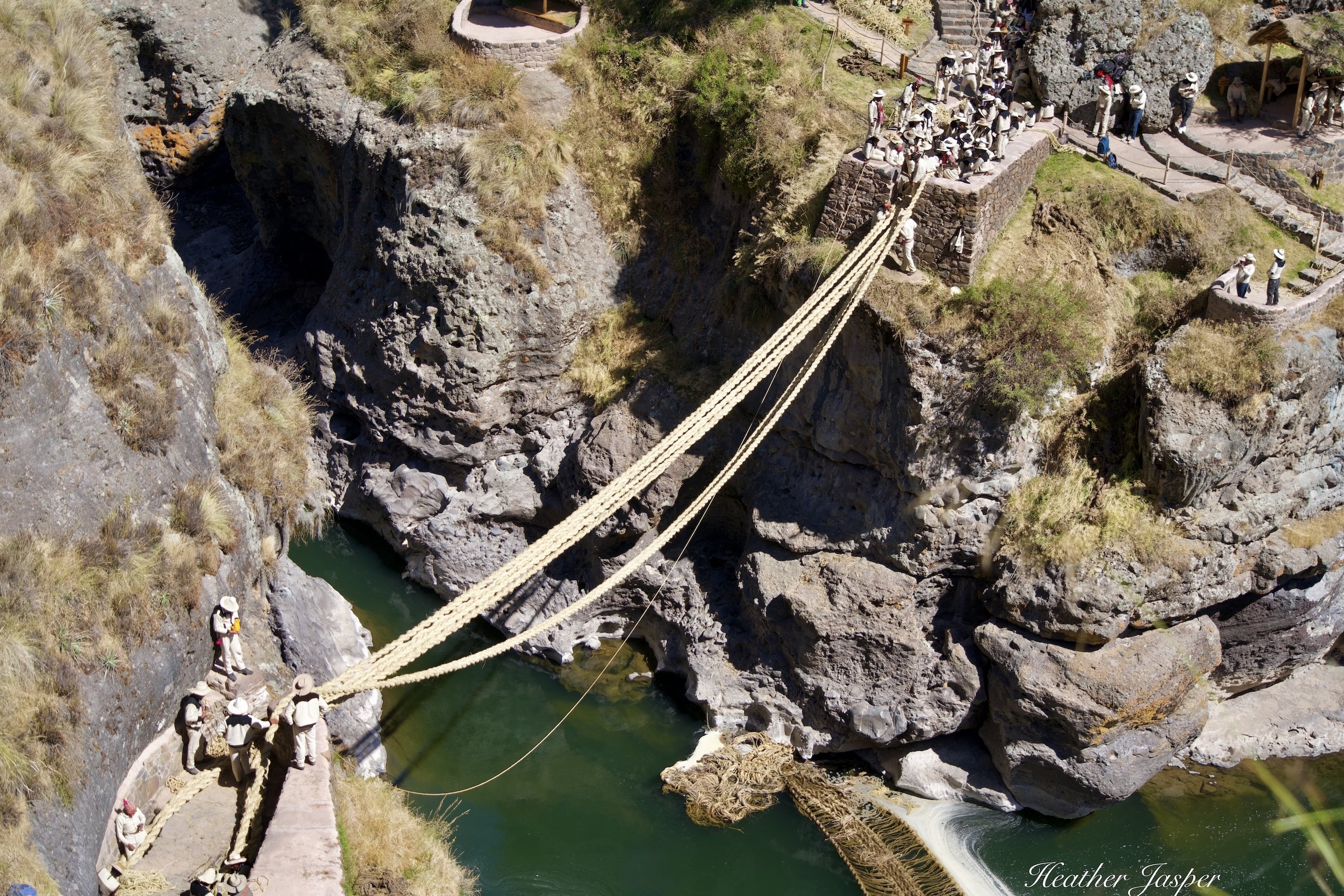
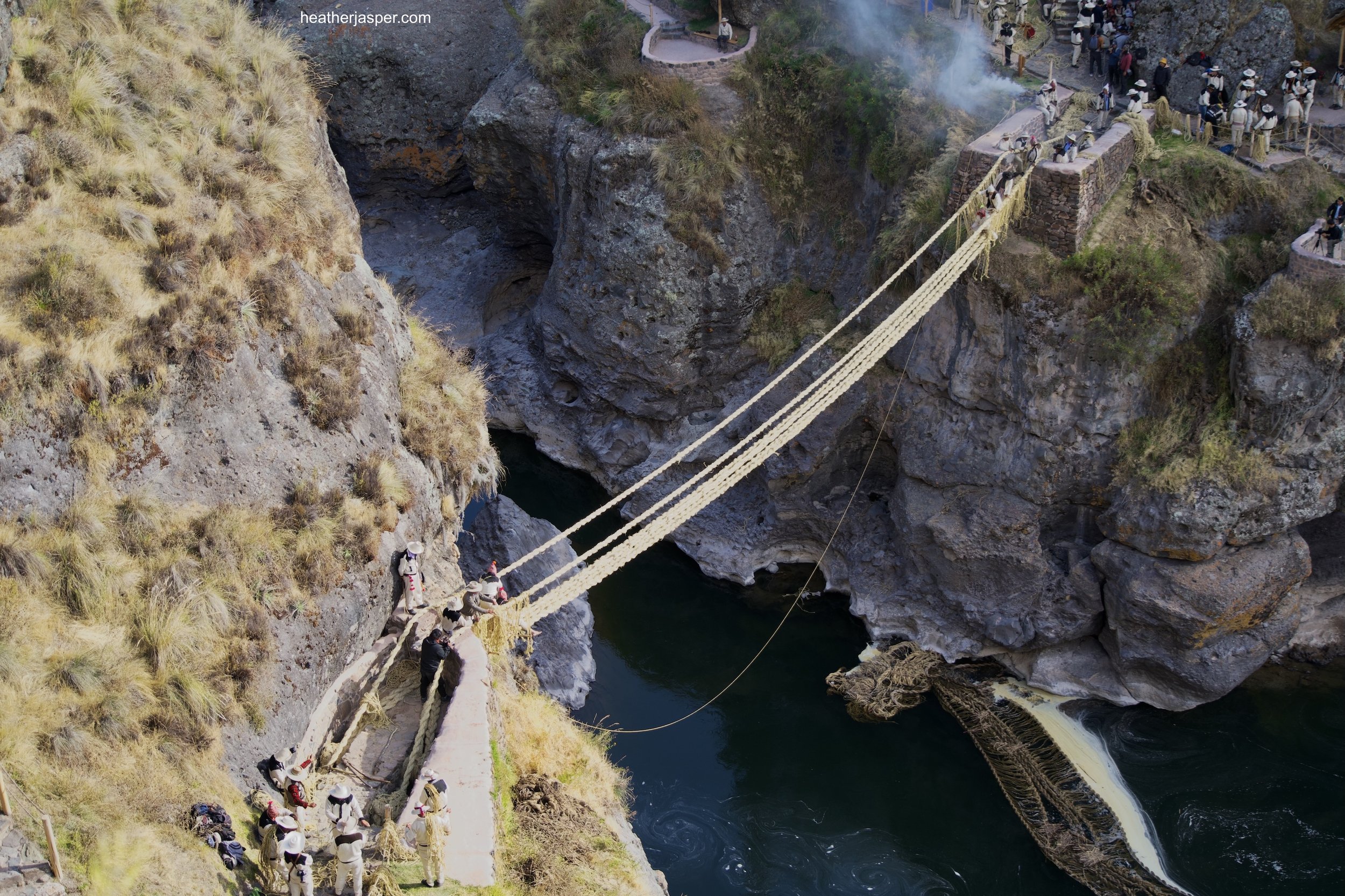
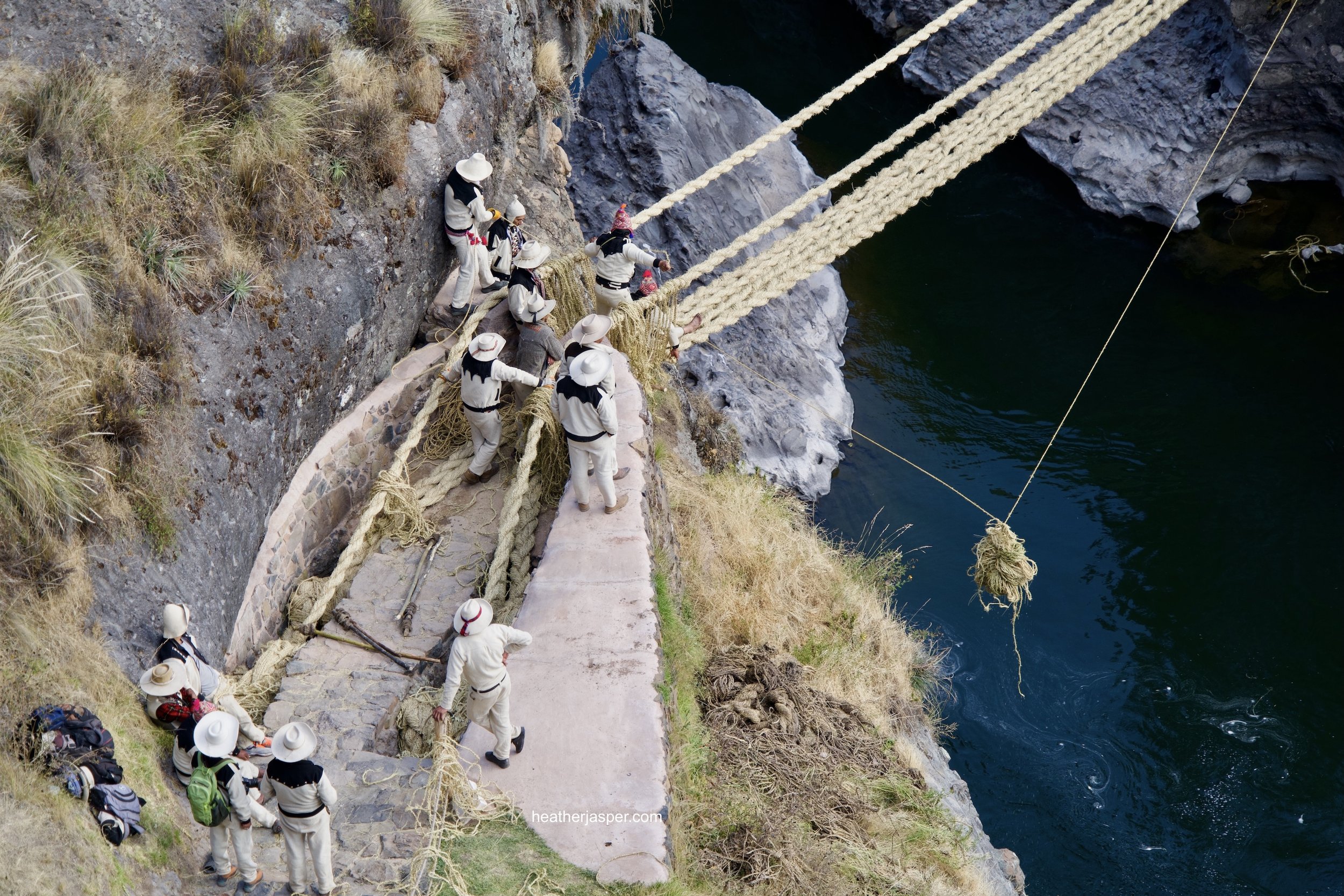

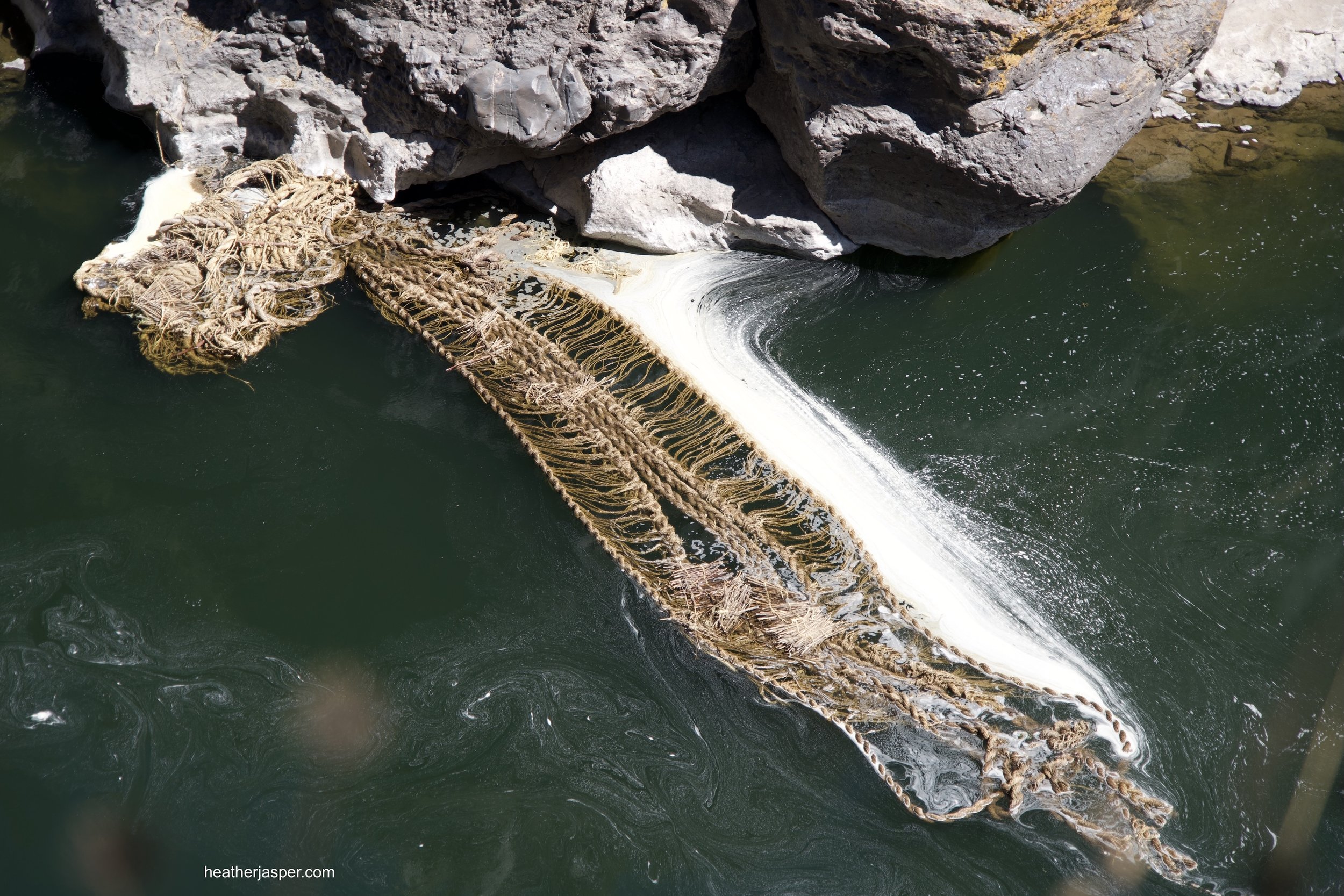

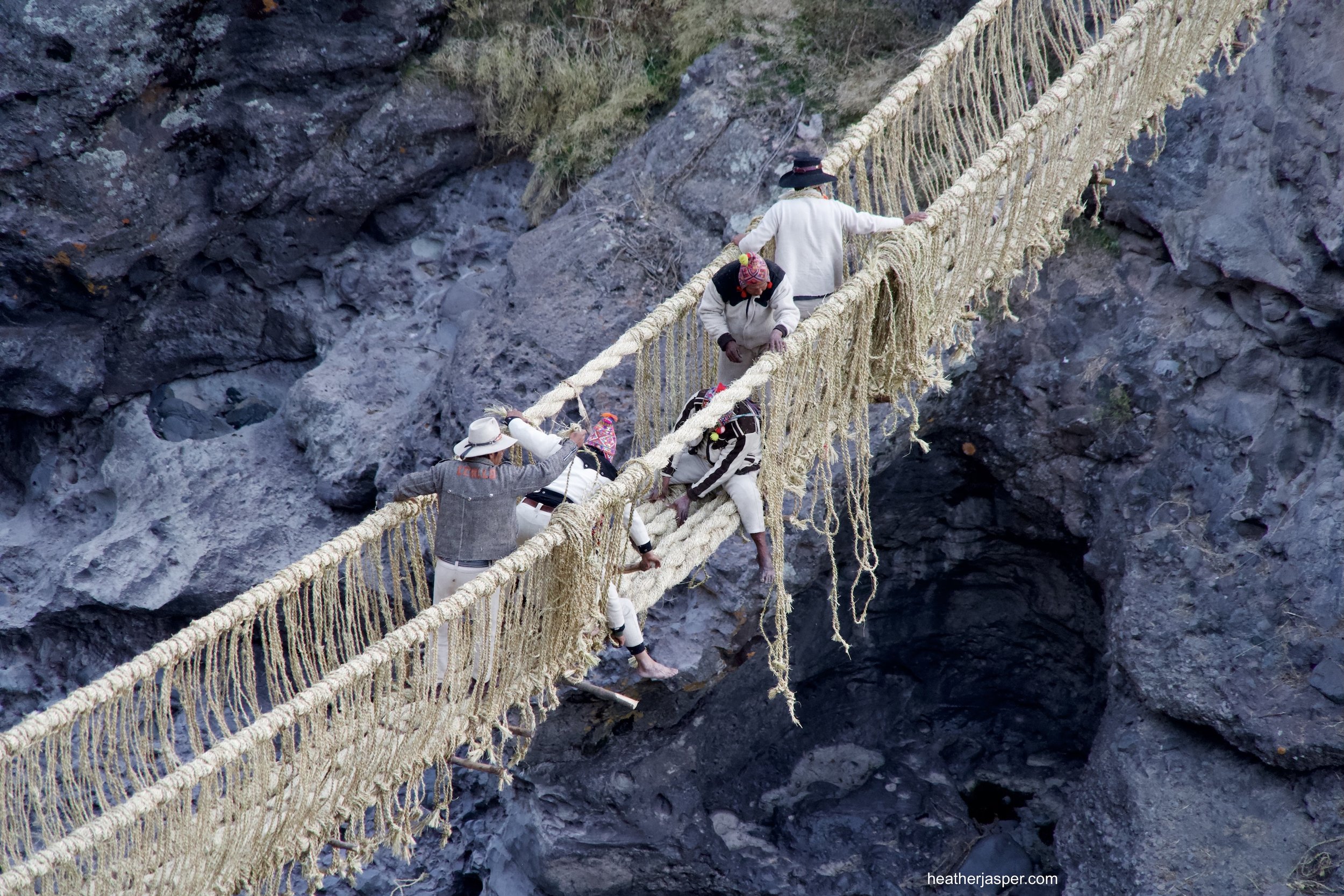

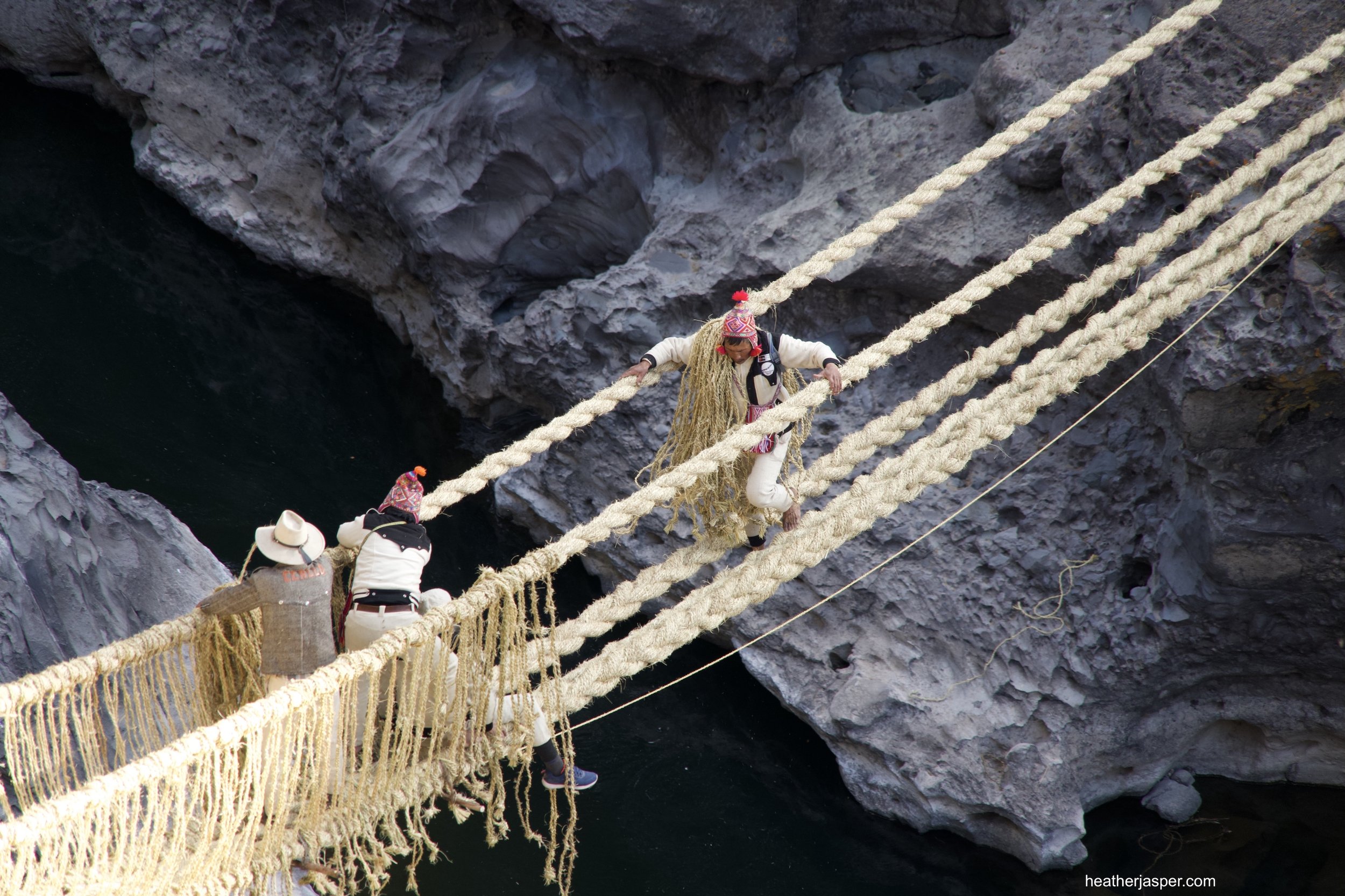
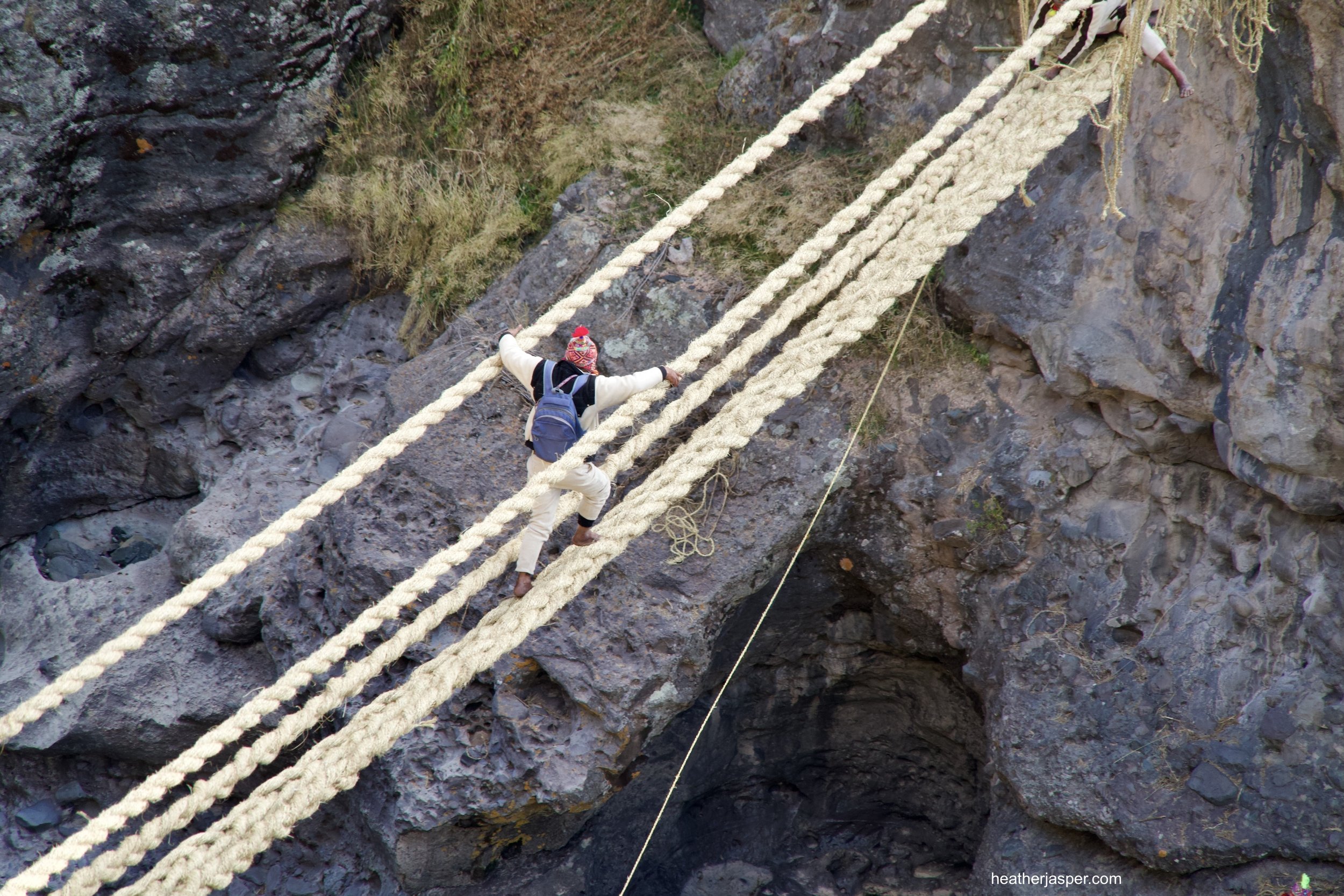
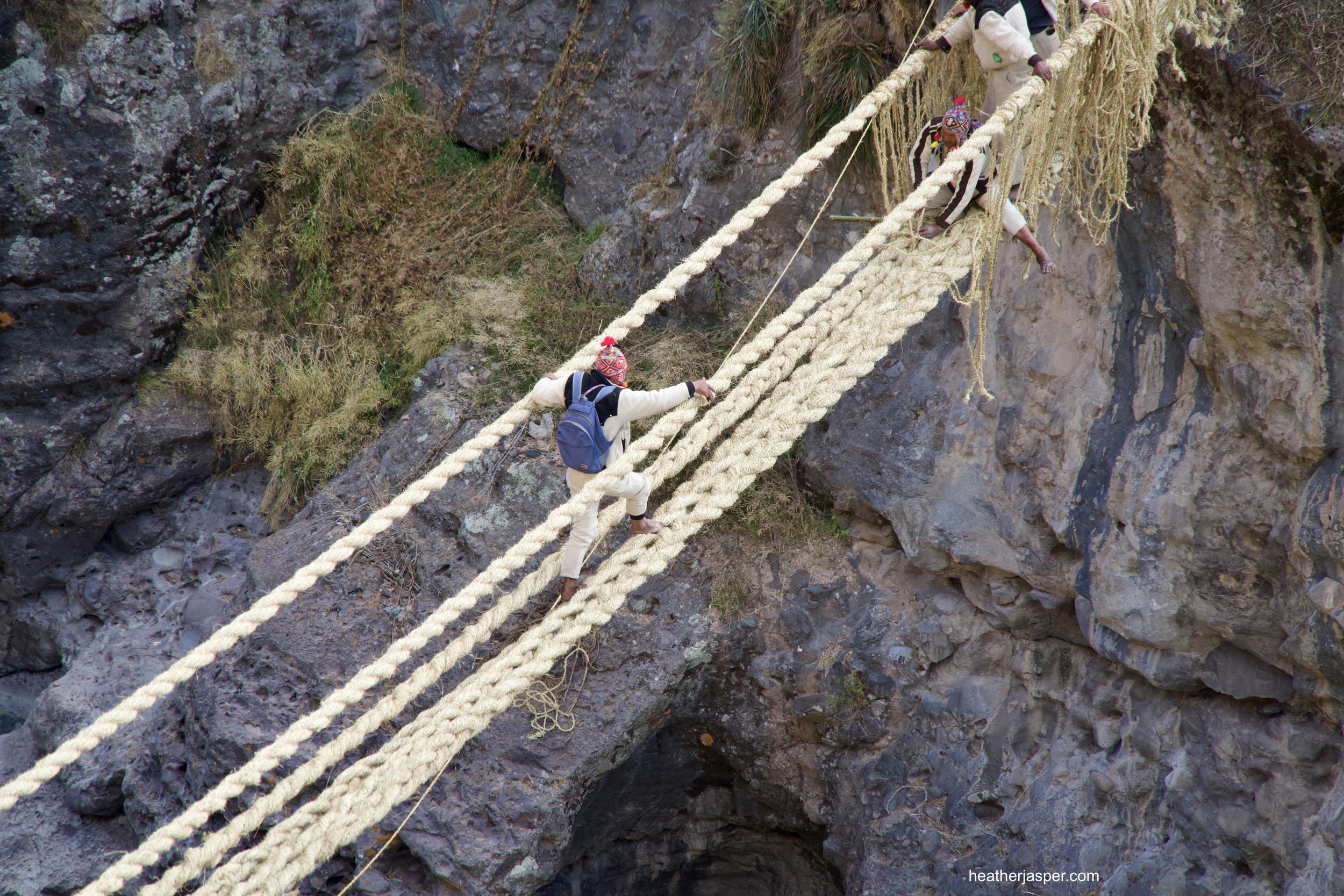

Q’eswachaka Bridge Rebuilding
This is held the second weekend in June every year.
Every year the communities around the Q’eswachaka bridge rebuilt it, because it’s made of grass. The bridge spans a deep canyon and though there is now a cement and steel bridge for cars, the nearby communities continue to rebuild the bridge as they have for well over 500 years.
For days beforehand, they gather the strong qoya ichu grass that grows all over the mountains. They dry it, then the women twist it into ropes and braid those ropes into bigger and bigger ropes, until they’re strong enough to build a bridge with.
The men’s role is to first cut down the old bridge, which is left to decompose in the canyon. It’s only grass, sticks and some rawhide ties, so everything is biodegradable. Next, they take the twisted and braided ropes down into the canyon and one by one, pull them across to make the new bridge. The whole process takes several days, but the actual building is done all in one day.

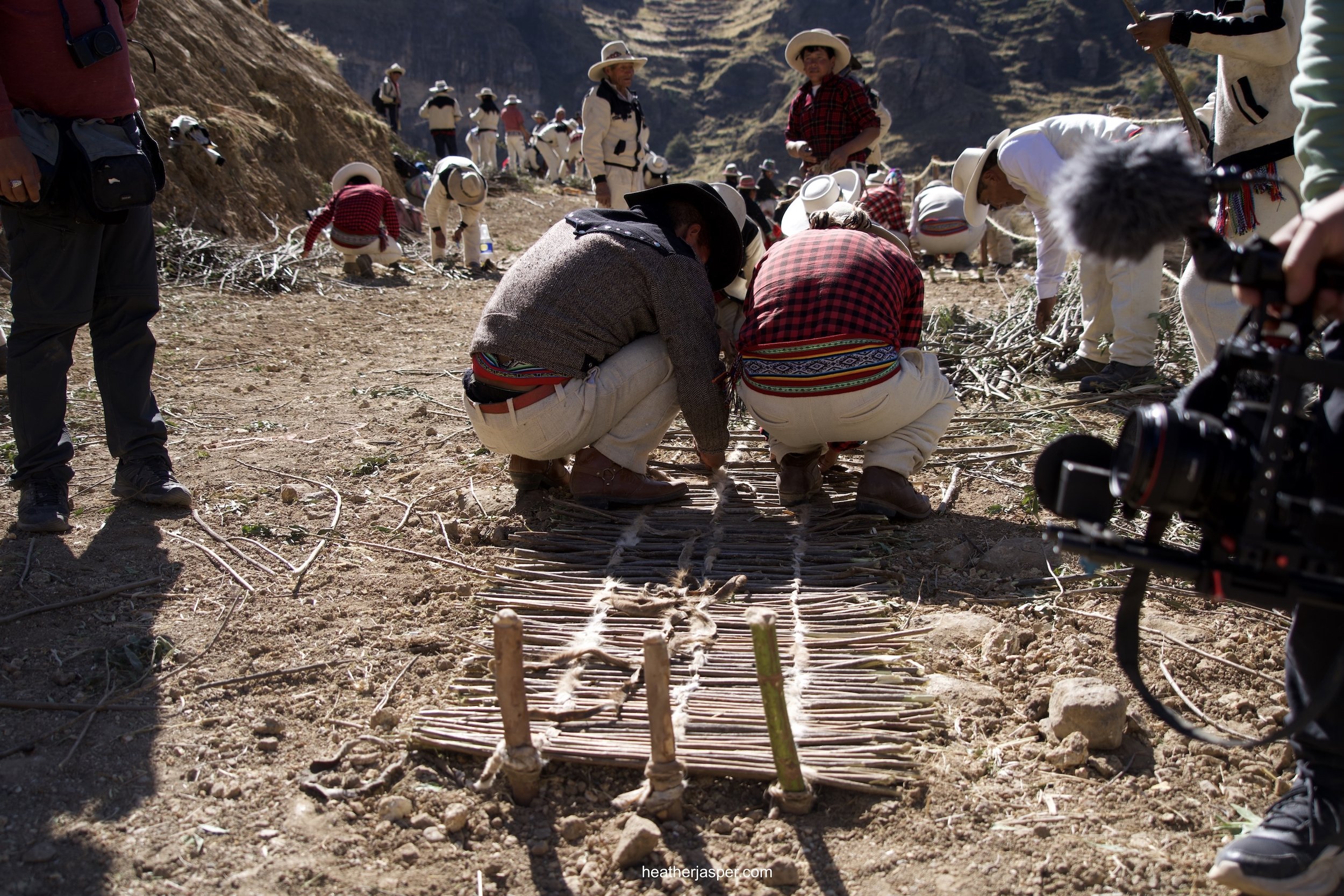
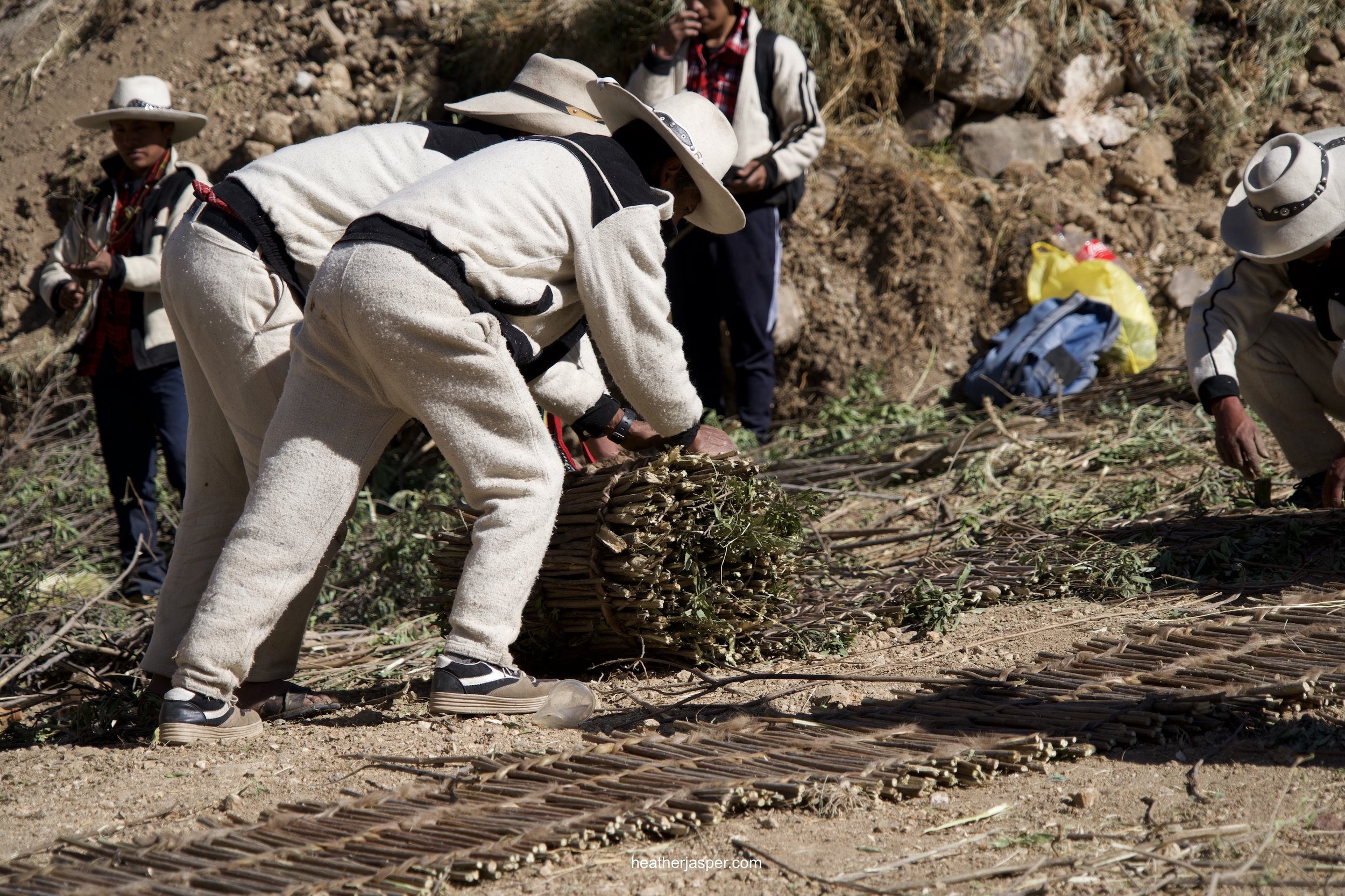
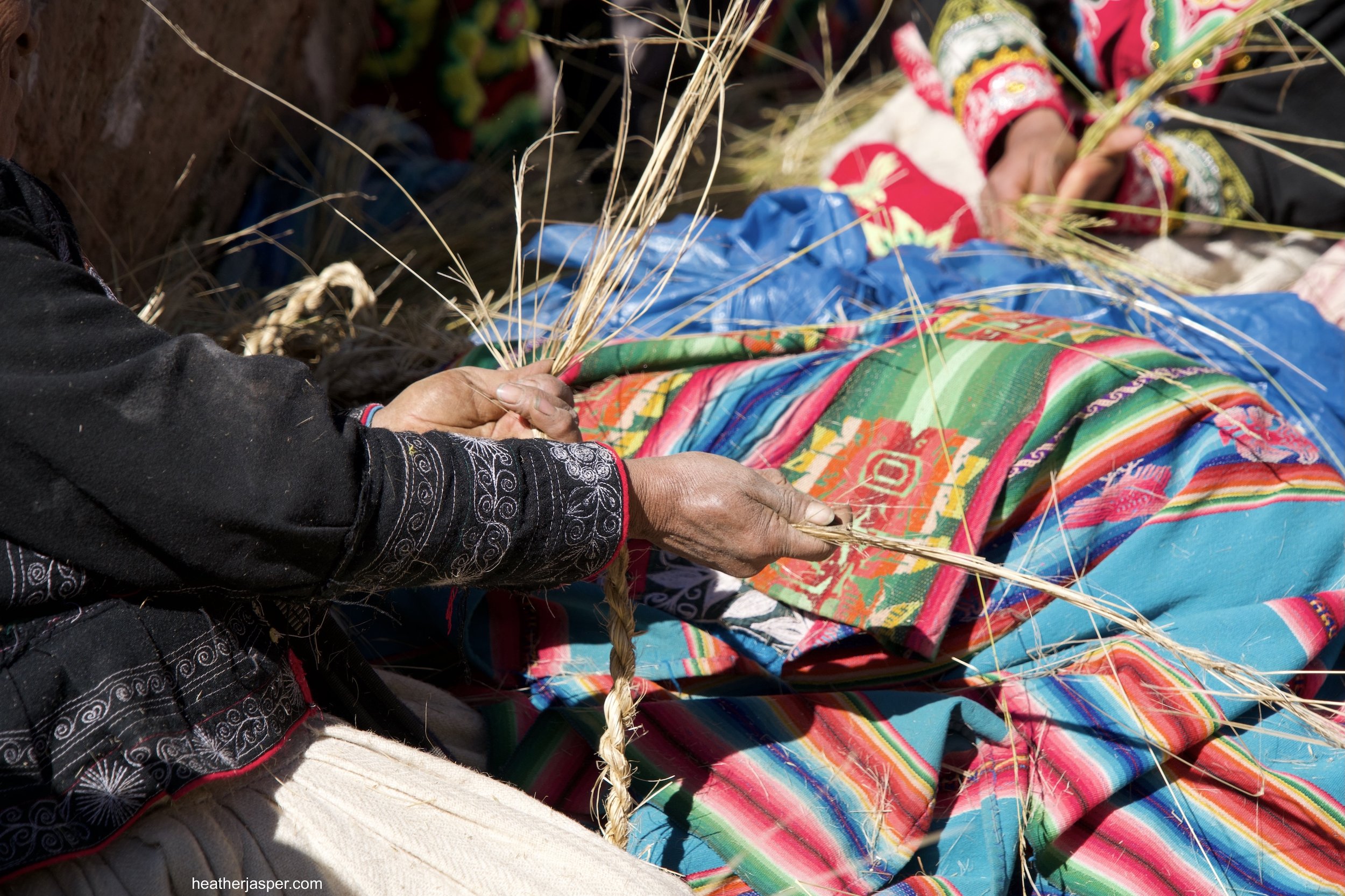
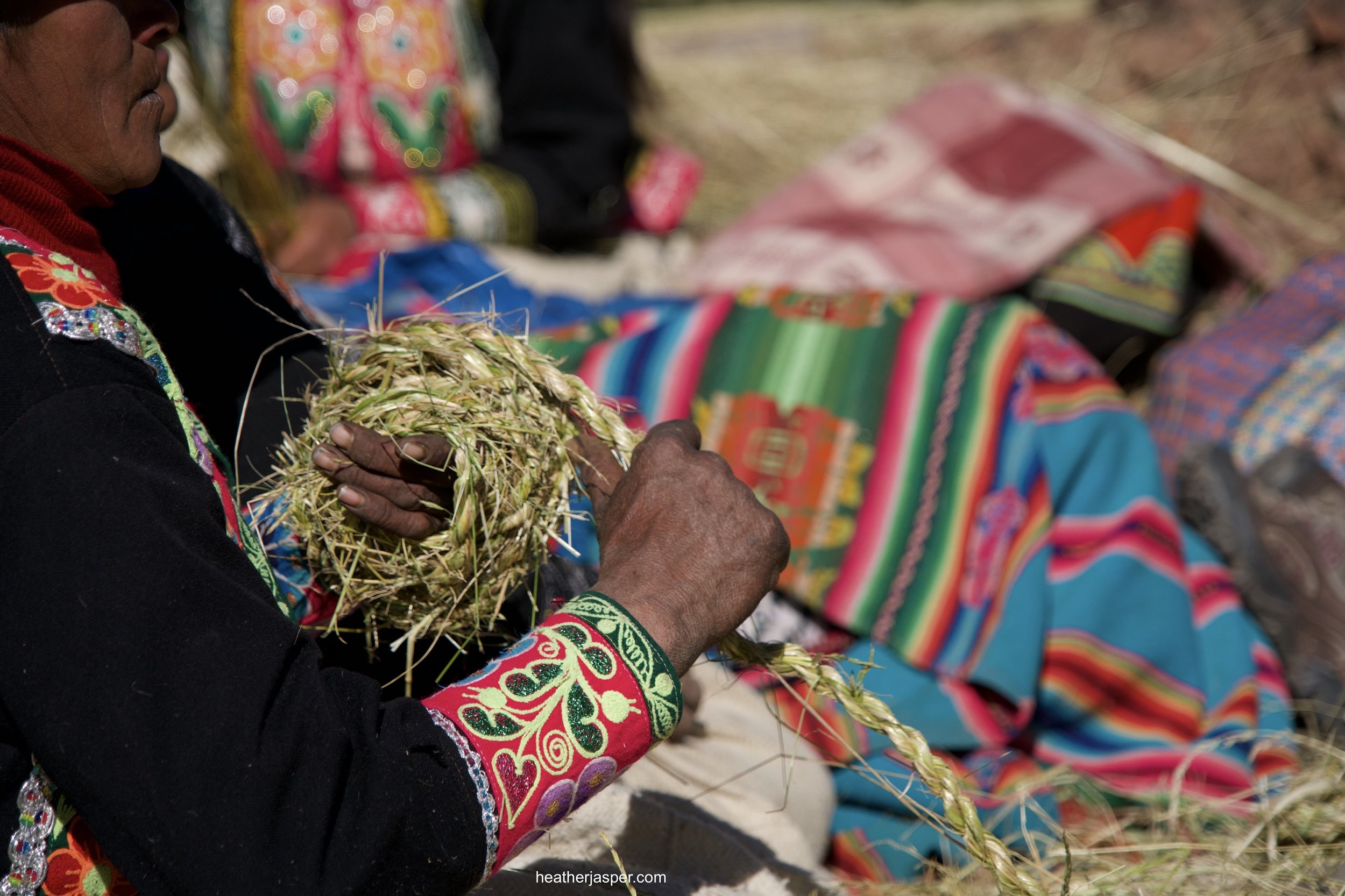
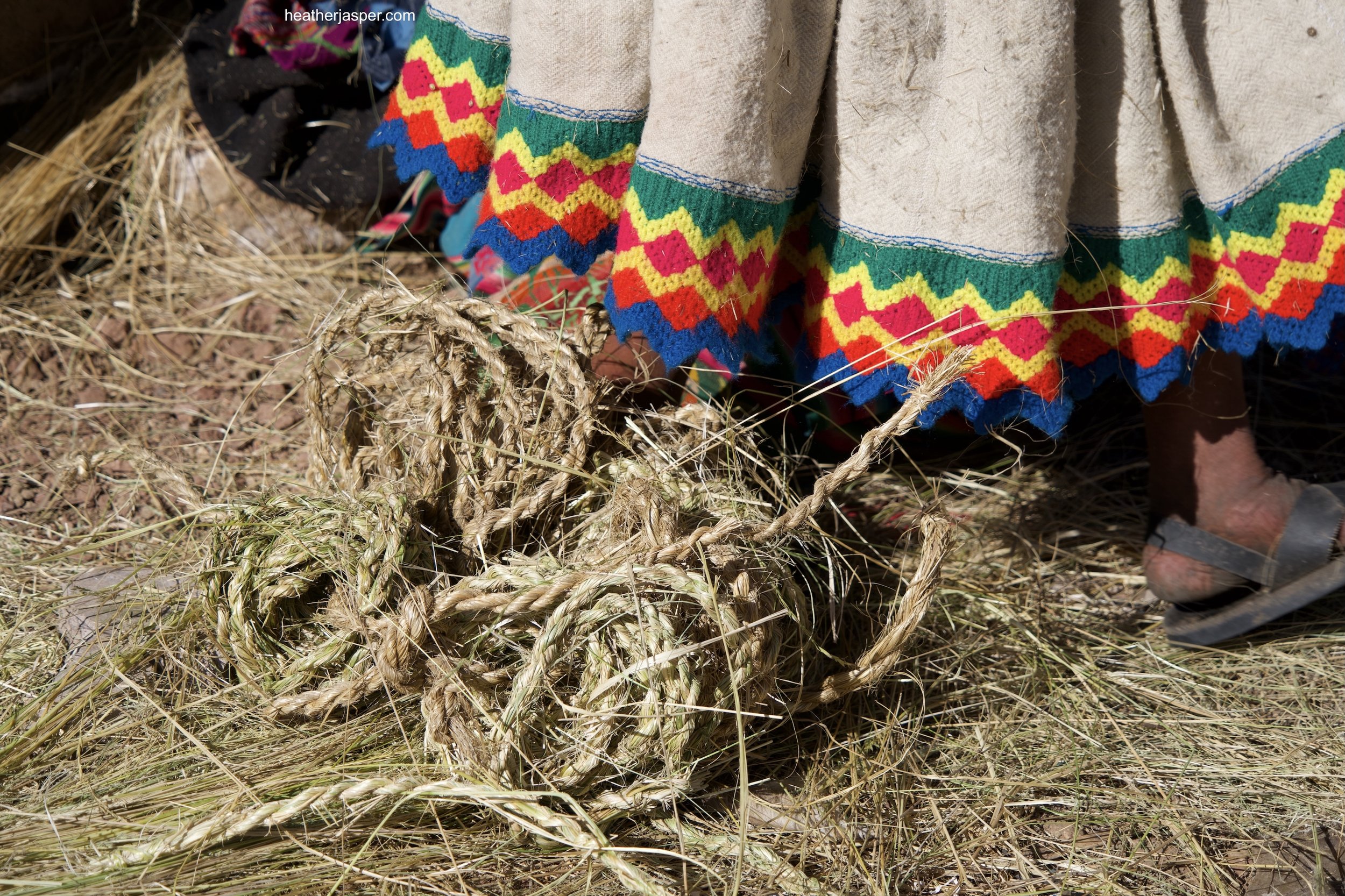

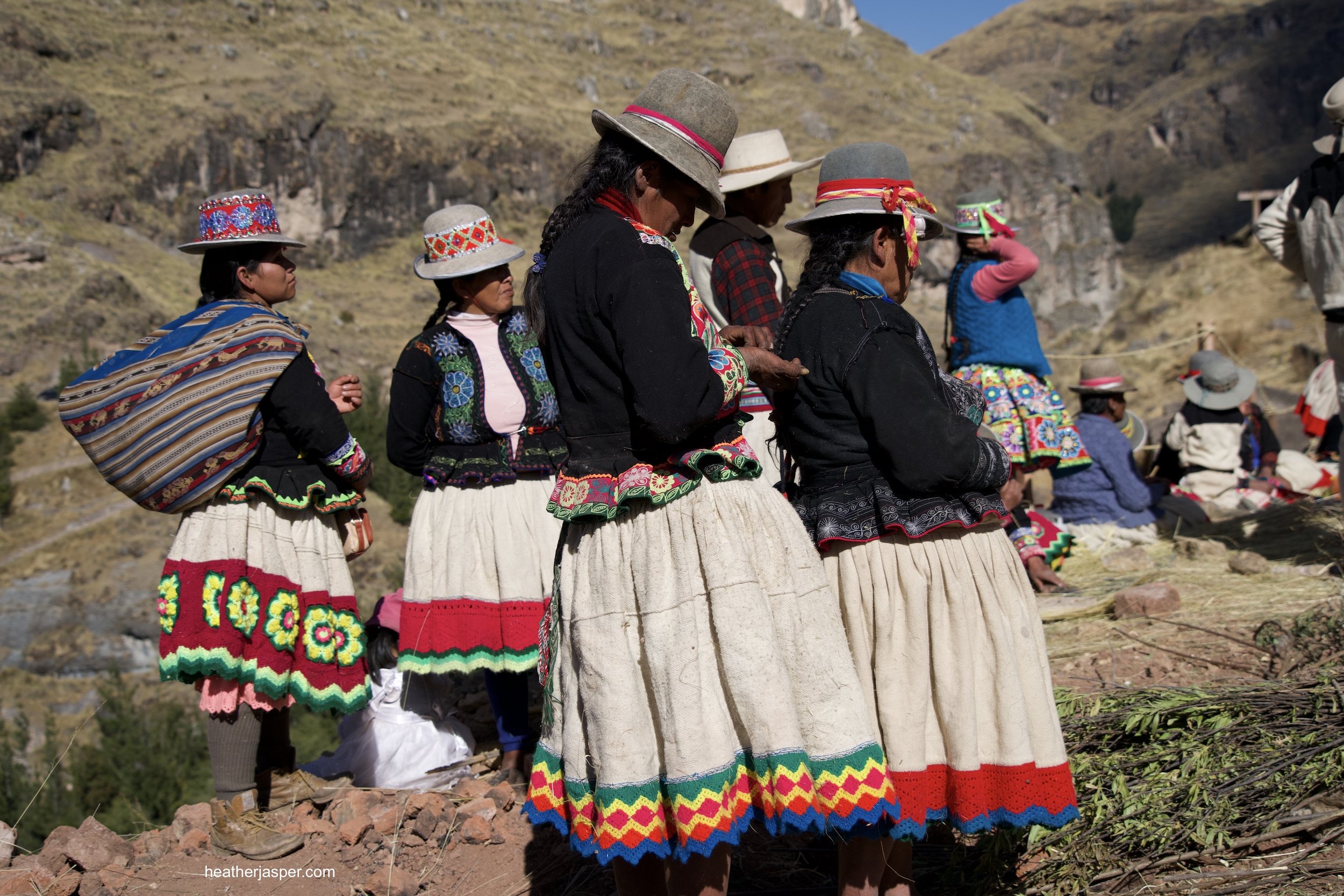
It’s a fabulous event to watch, partly for the amazing engineering feat and also for the people watching. Men and women still wear plain homespun cloth and women wear colorful handknit sweaters. It’s a community event and you can see people from different villages coming together as they only do once a year, but as they have done for innumerable generations.
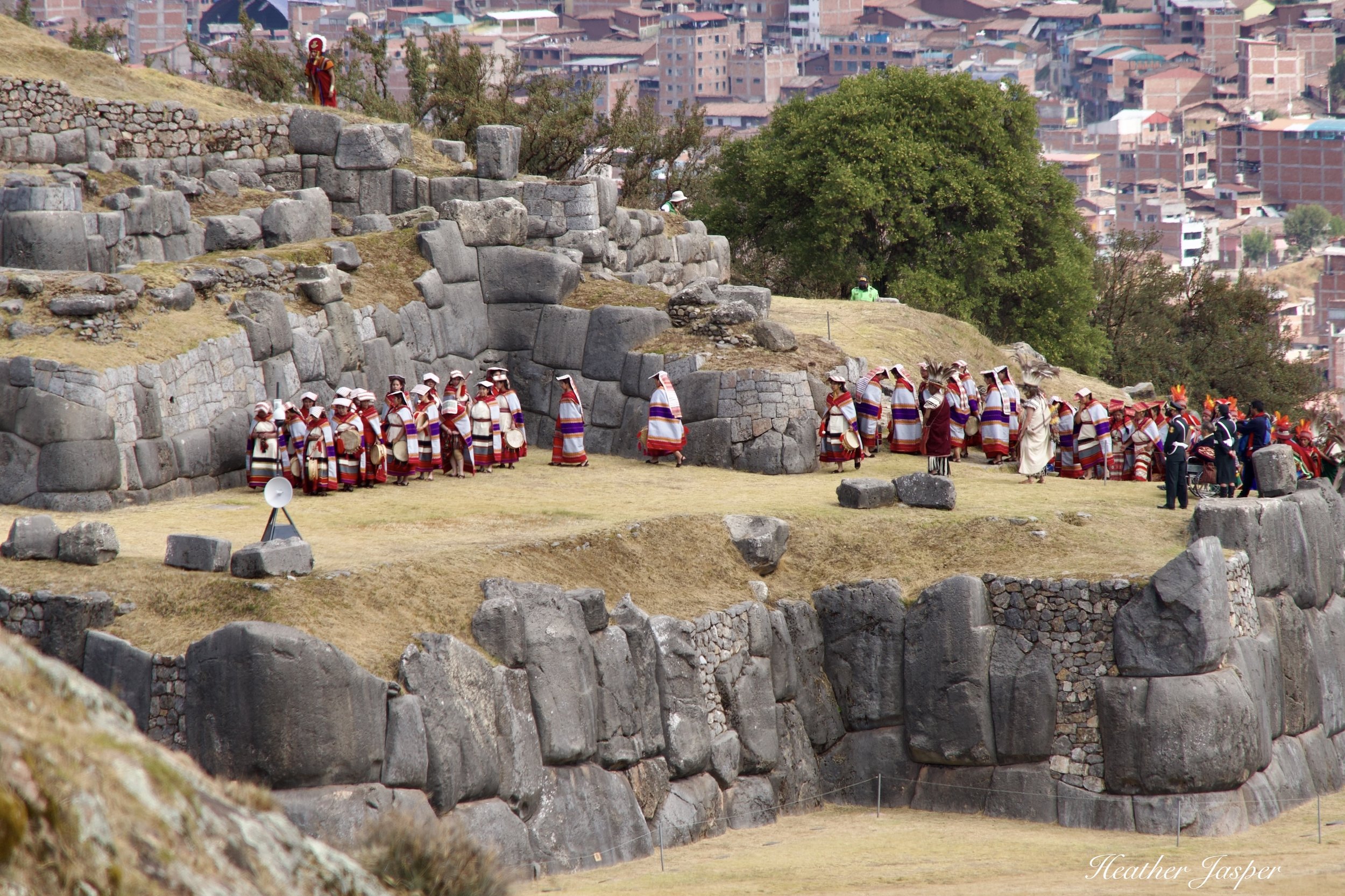
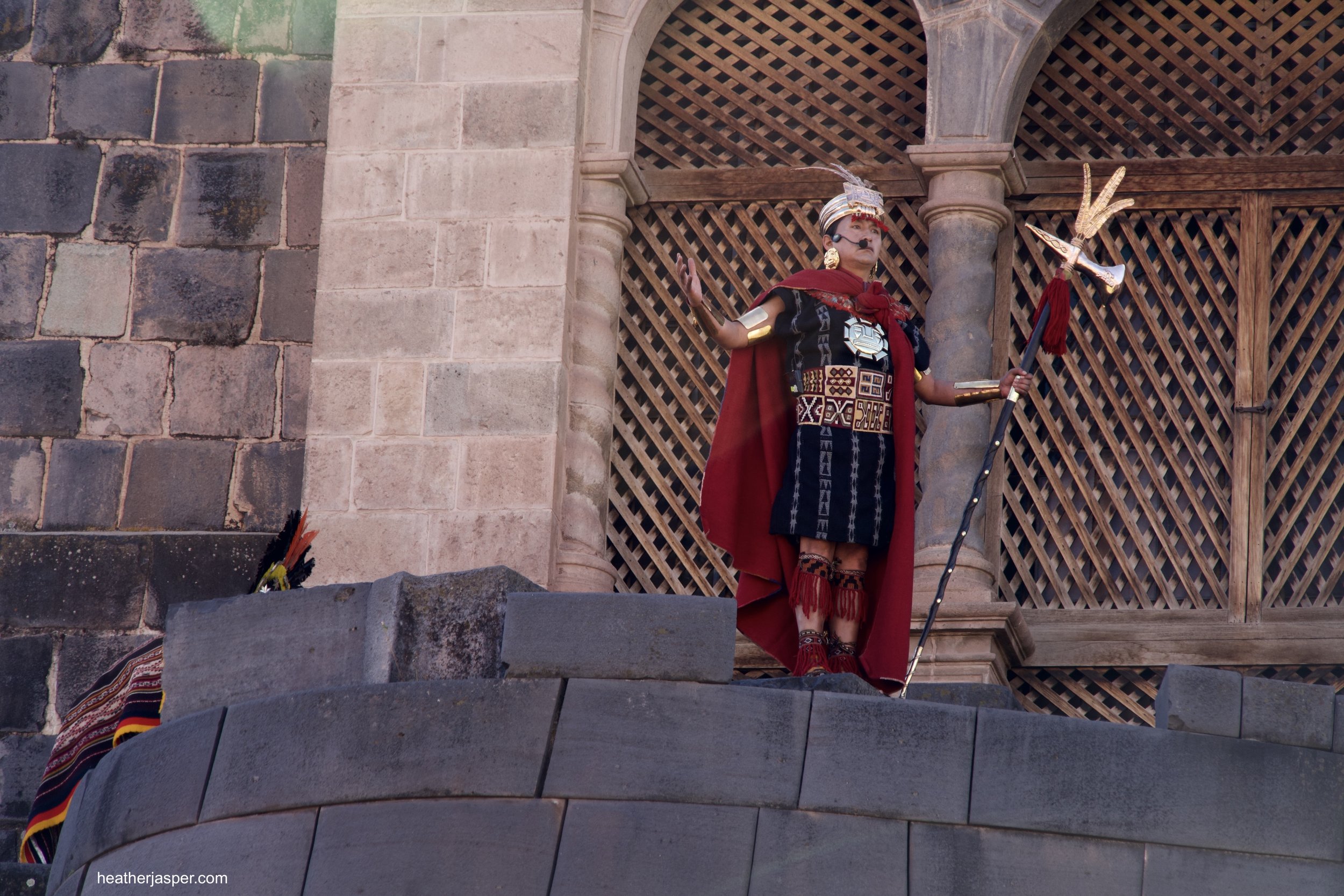
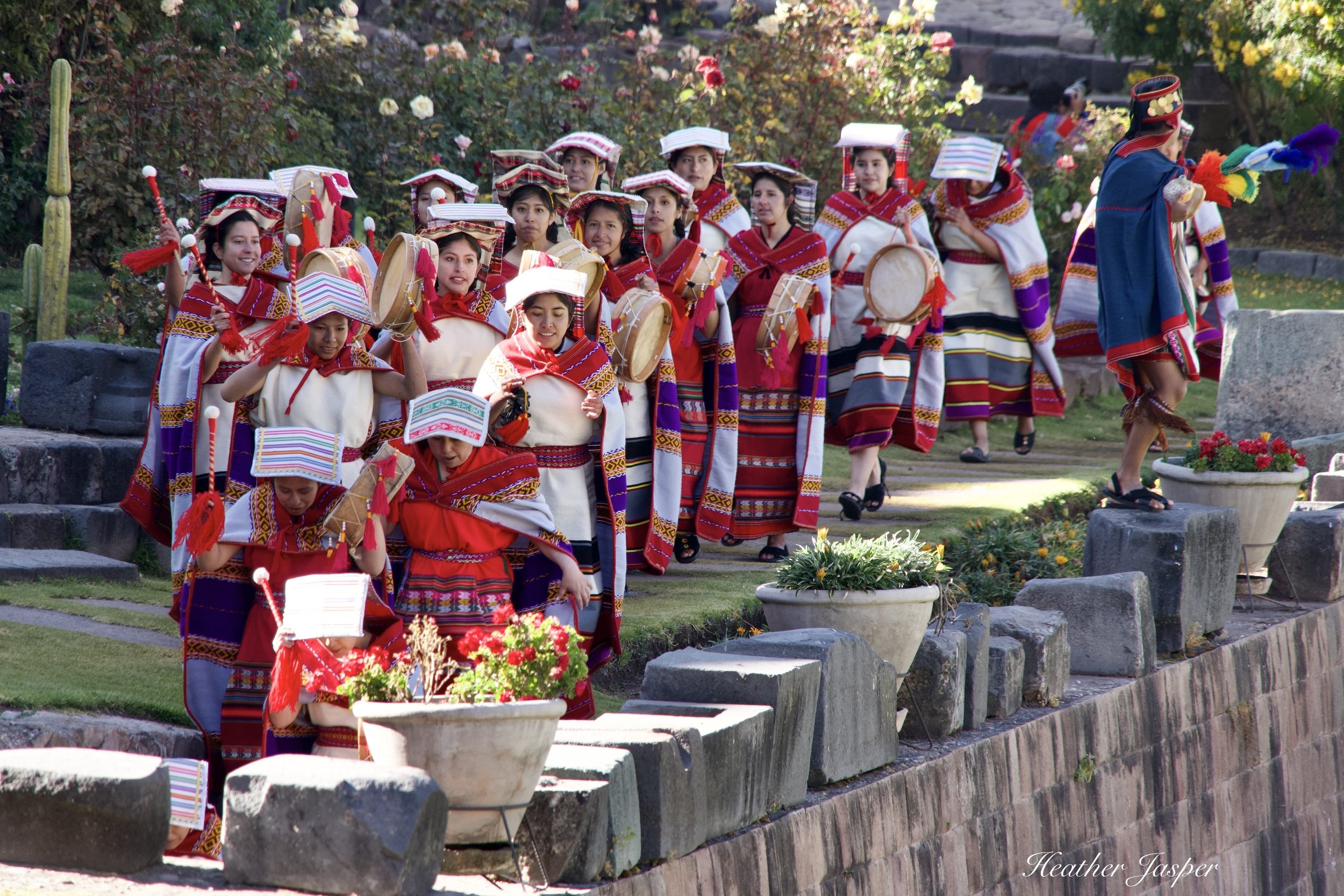
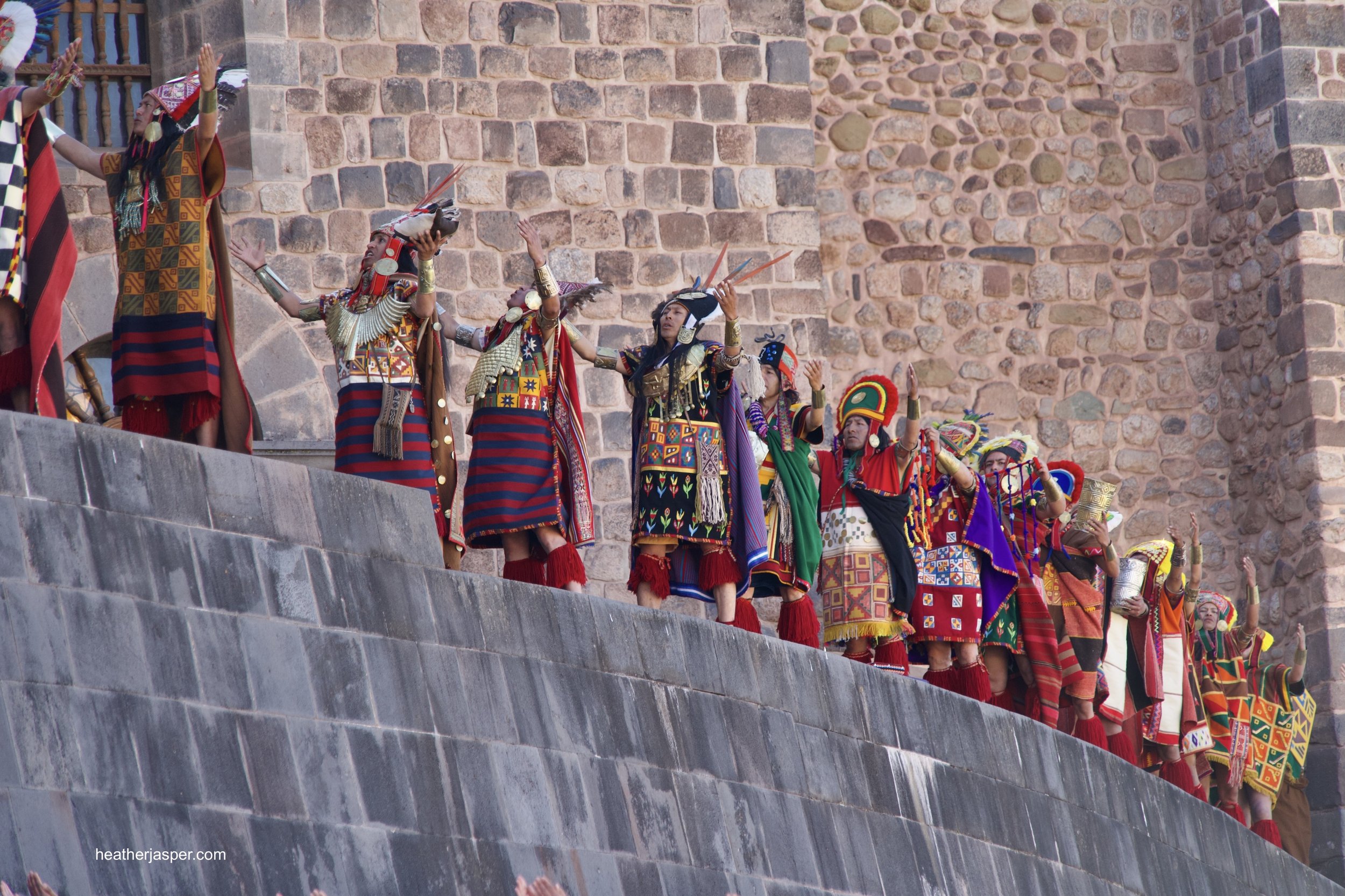
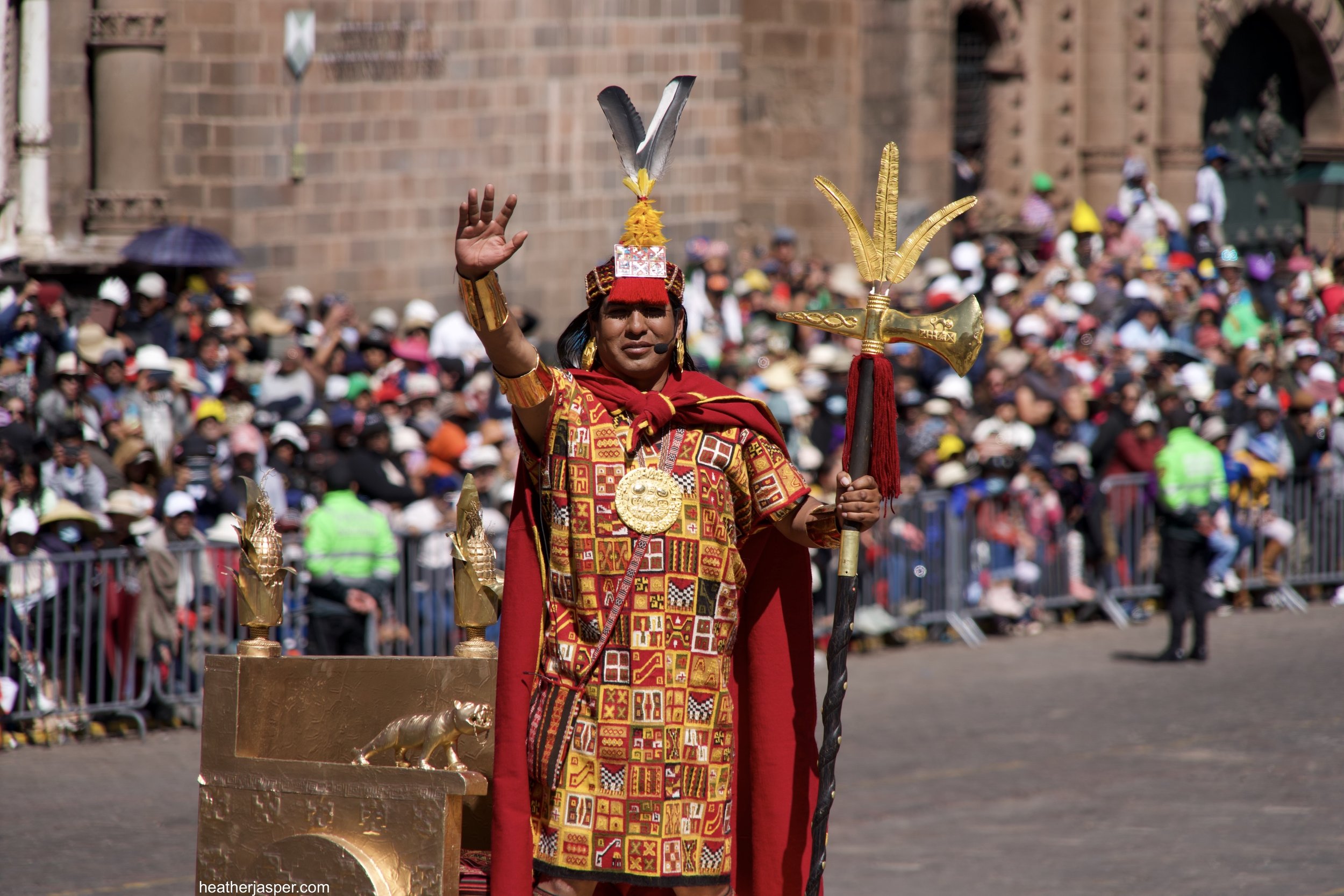
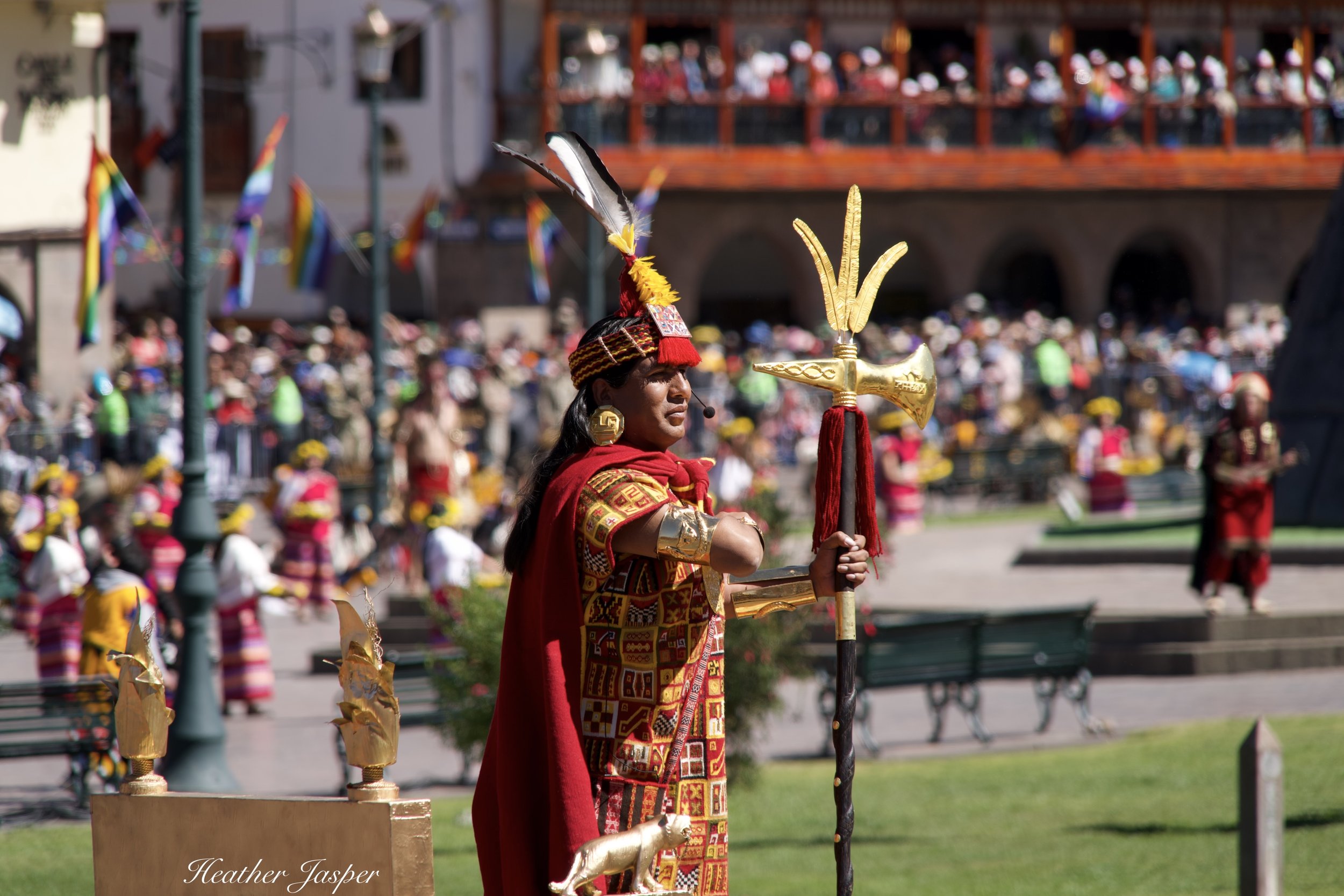
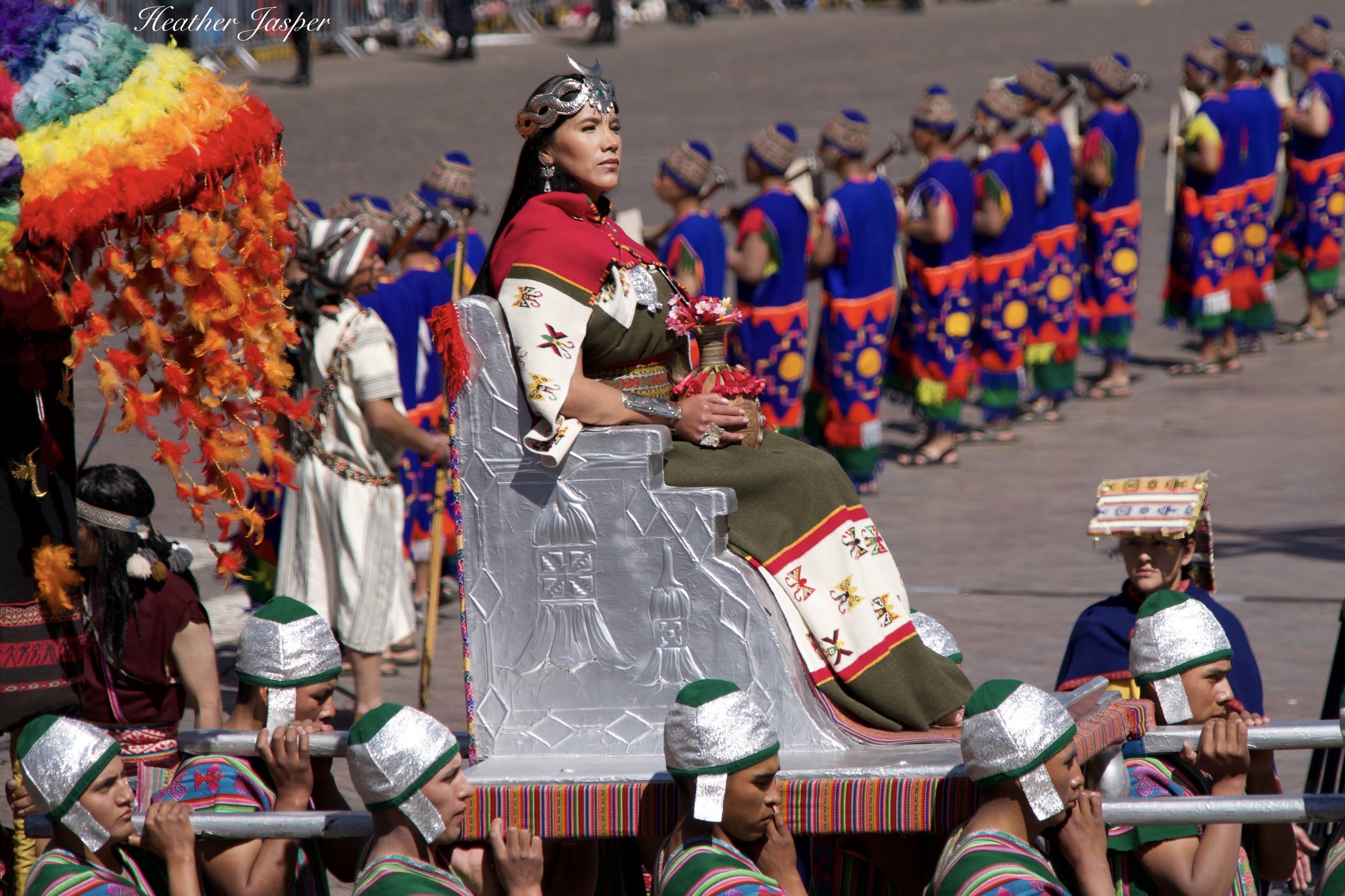
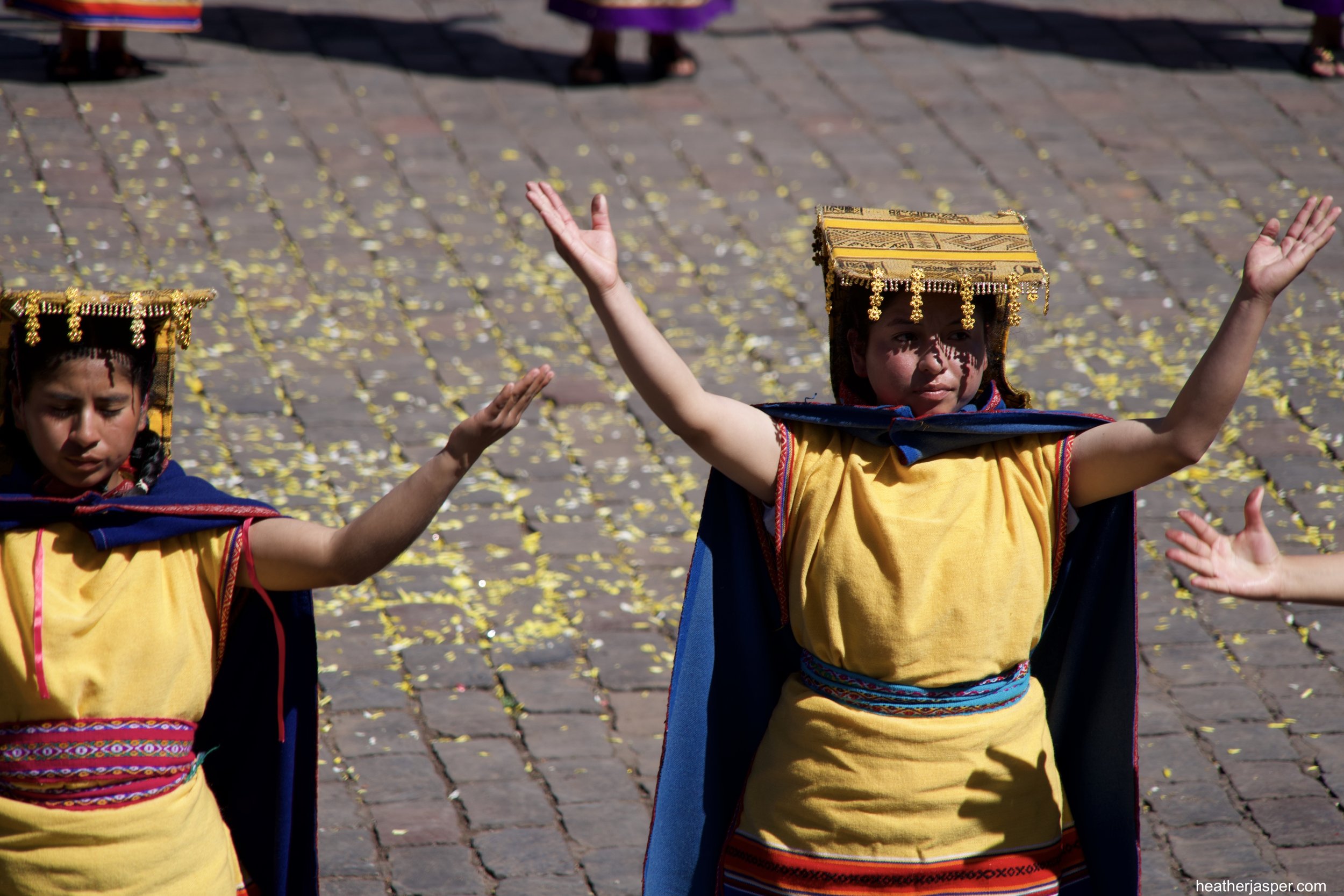
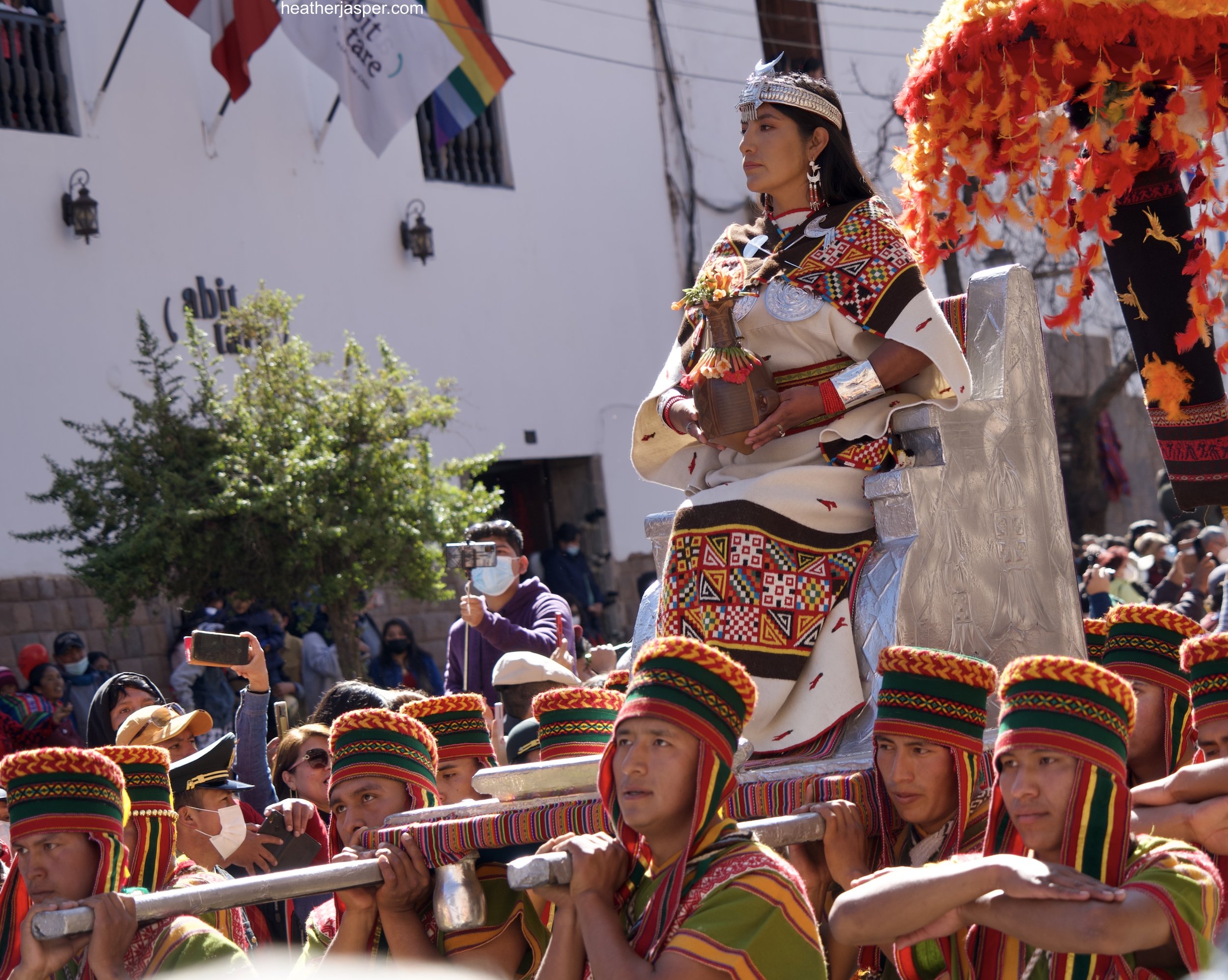
Inti Raymi
Inti Raymi is musical theater in three acts every June 24th in Cusco.
The script and action was written by a group of historians and intellectuals in the 1940s and has been performed almost every year since. The first part takes place at the Qorikancha, the second in the Plaza de Armas and the third up at Sacsayhuaman. It’s based on historical descriptions of an Inca celebration held around winter solstice, June 21st.
This is a truly amazing spectacle with hundreds of dancers dressed in colorful costumes representing all corners of the former Inca empire, called Tahuantinsuyo. People who want a good seat at one or more of the venues can buy seats online ahead of time. That gets you a spot on a bleacher that might not be particularly comfortable, so bring your own cushion to sit on. It does guarantee you a great view of the action and you’ll be able to hear what the main actors are saying, since they have microphones. However, all the lines are in Quechua, so you’ll need a guide to translate or you can buy a program that has the lines translated.
Read my blogs about Inti Raymi from 2023 and Inti Raymi 2022.
The tiny town of Paucartambo transforms every July as over 10,000 people crowd in for the Virgin of Carmen.
Virgen of Carmen in Paucartambo
July 15-18 in the town of Paucartambo.
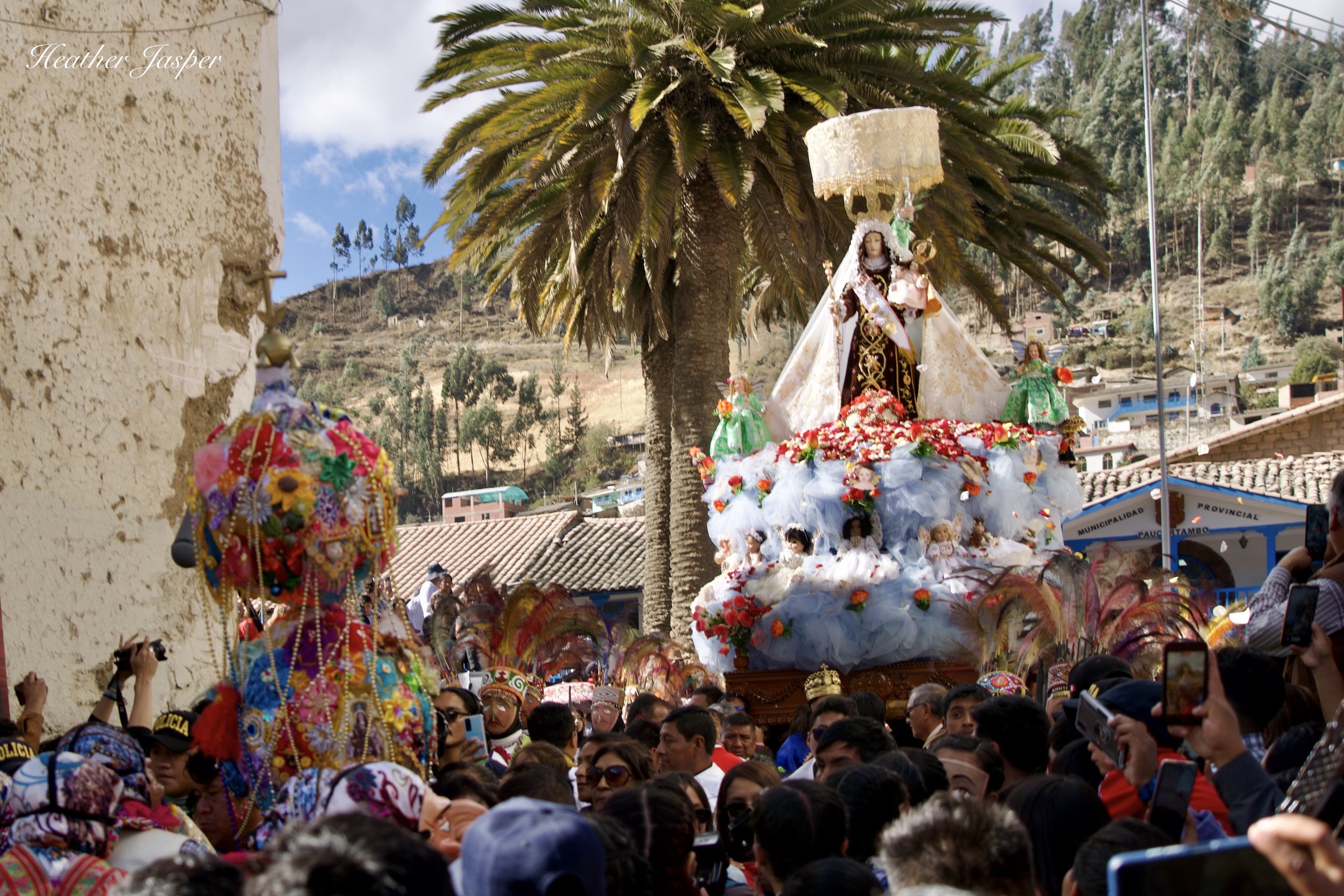
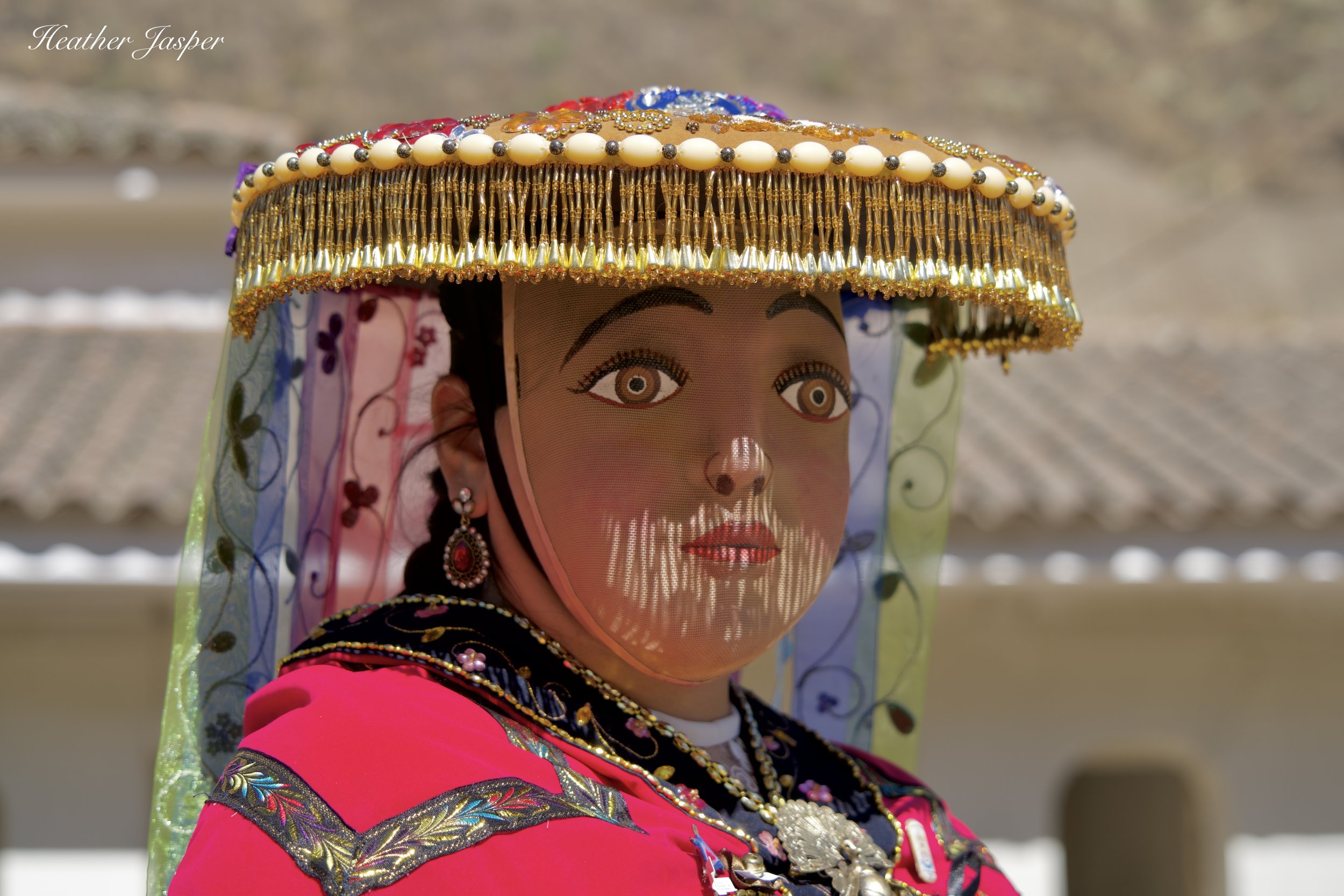
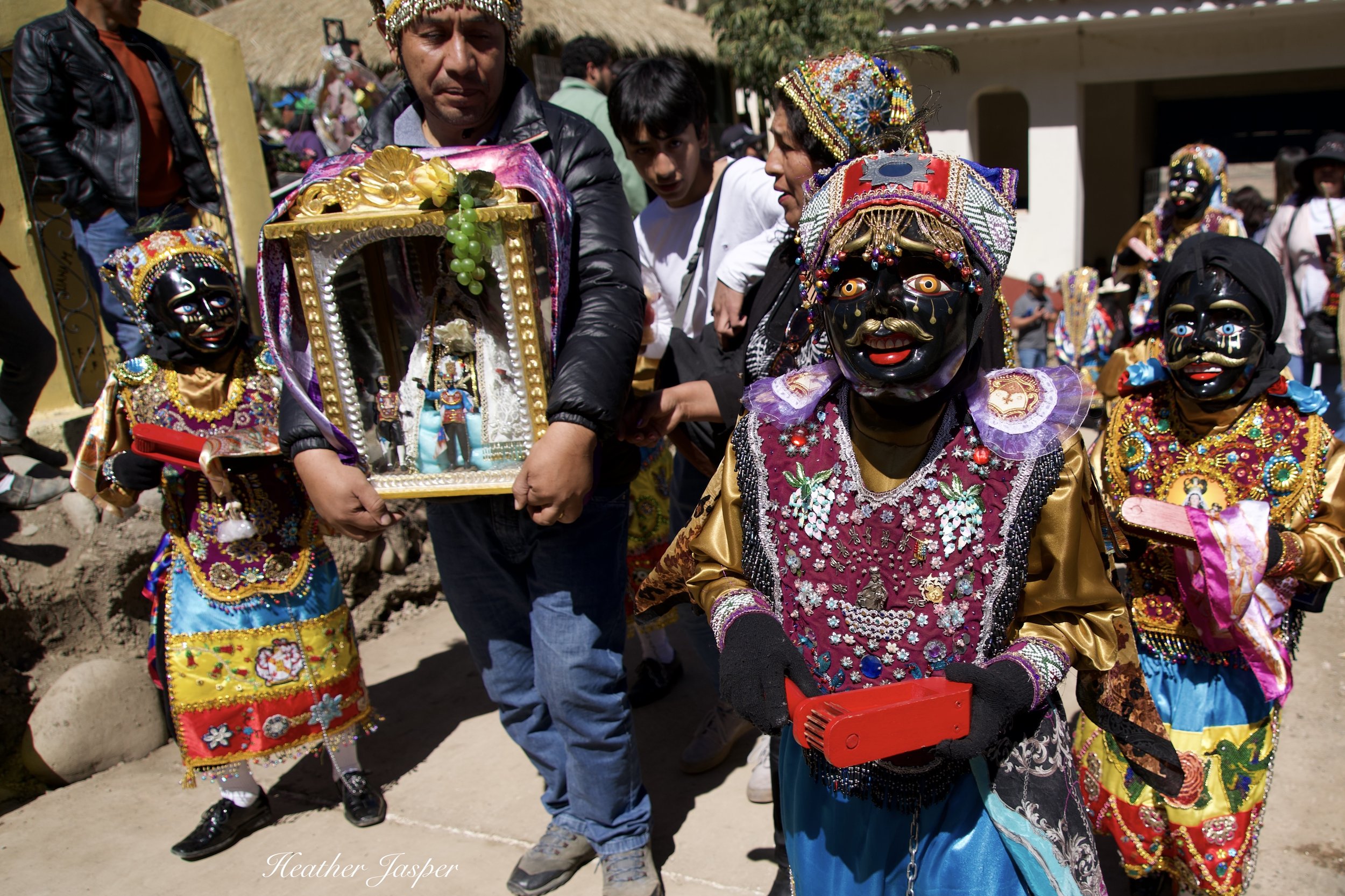
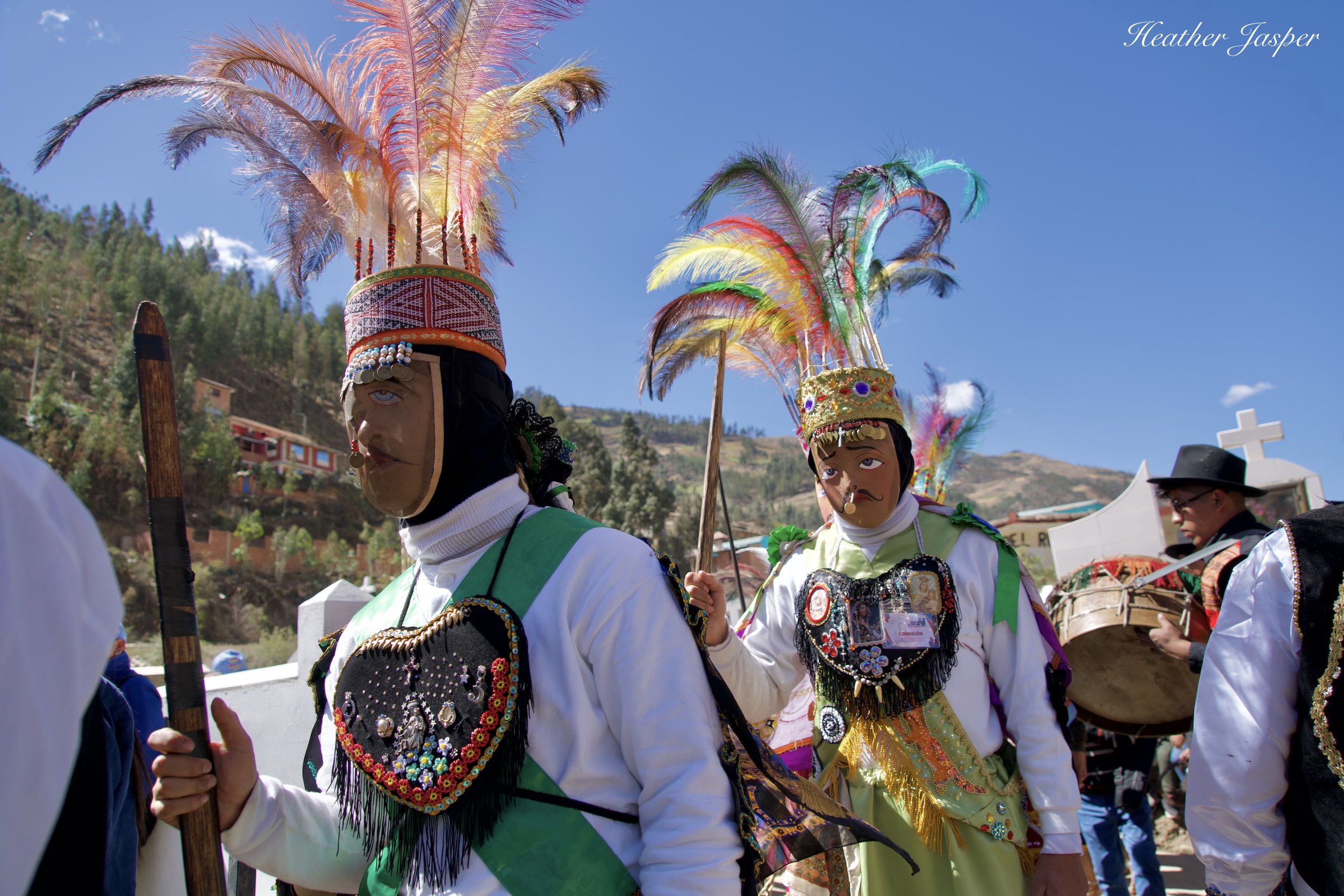
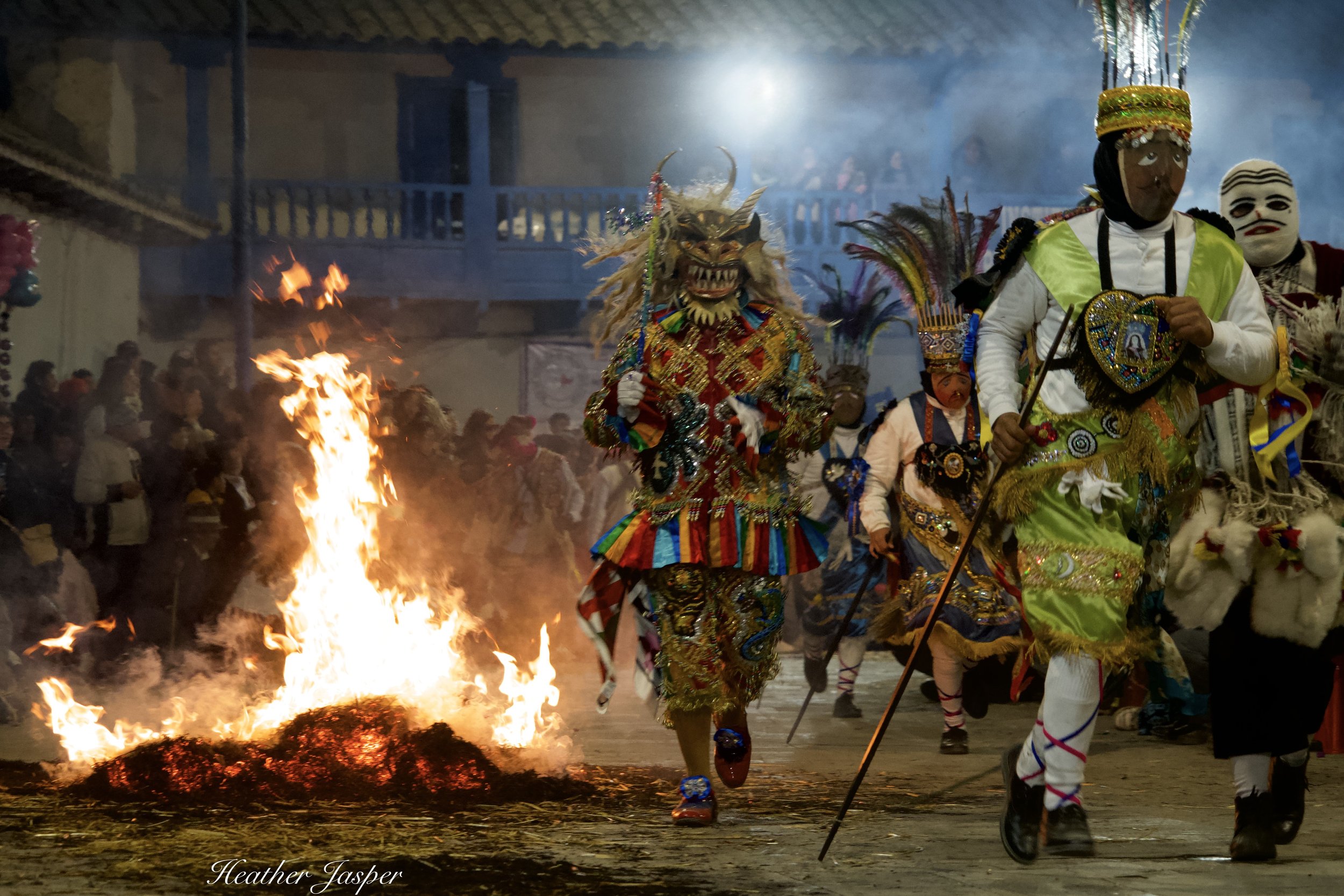

The Festividad de la Virgen del Carmen is one of the most fascinating and overwhelming cultural or religious celebrations you’ll ever see. There are 19 dance troupes, called danzas, which each has their own traditions, costumes, music, songs and role in the celebration. Each of the four days there are distinct activities, traditions and events held by some or all of the 19 danzas.
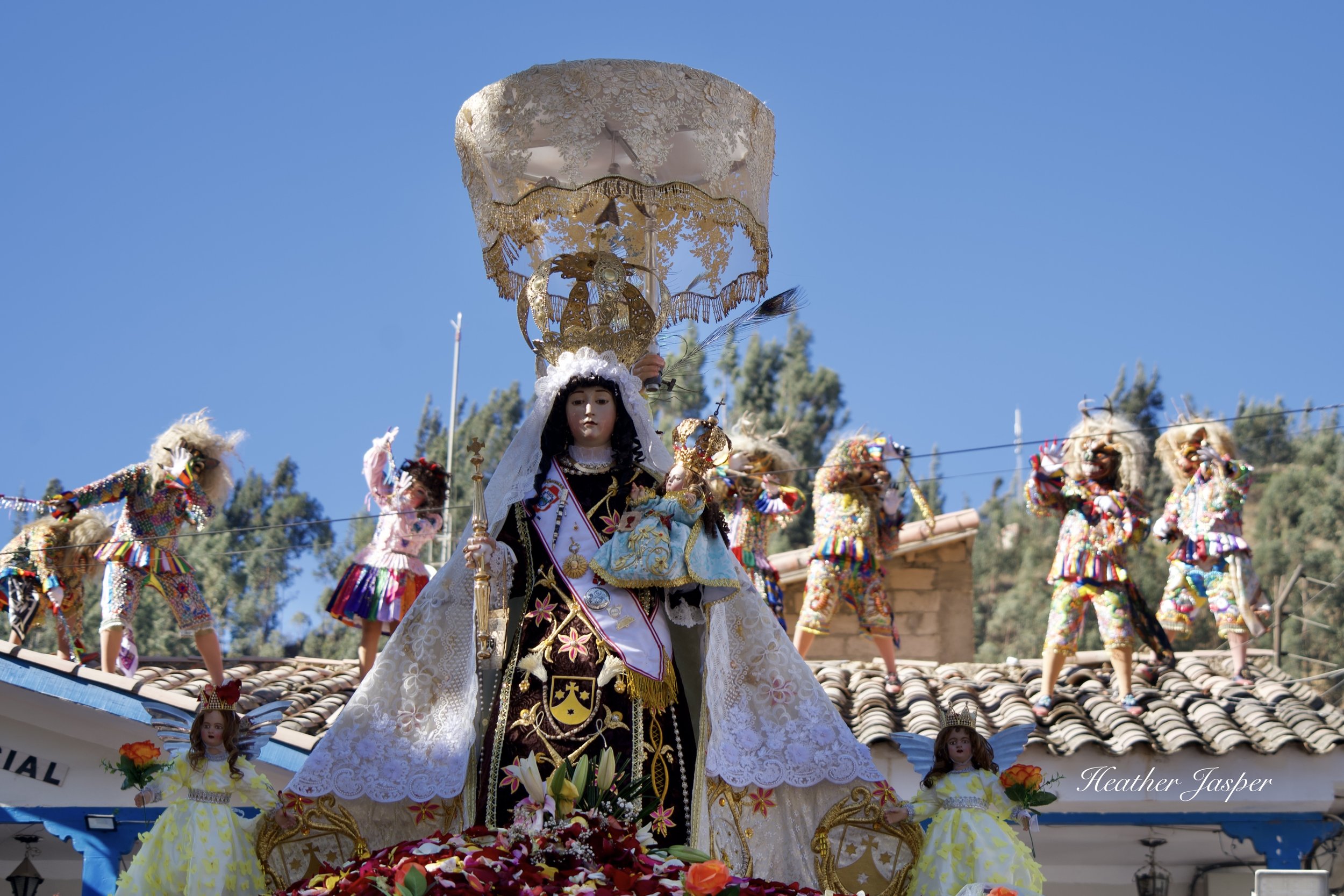
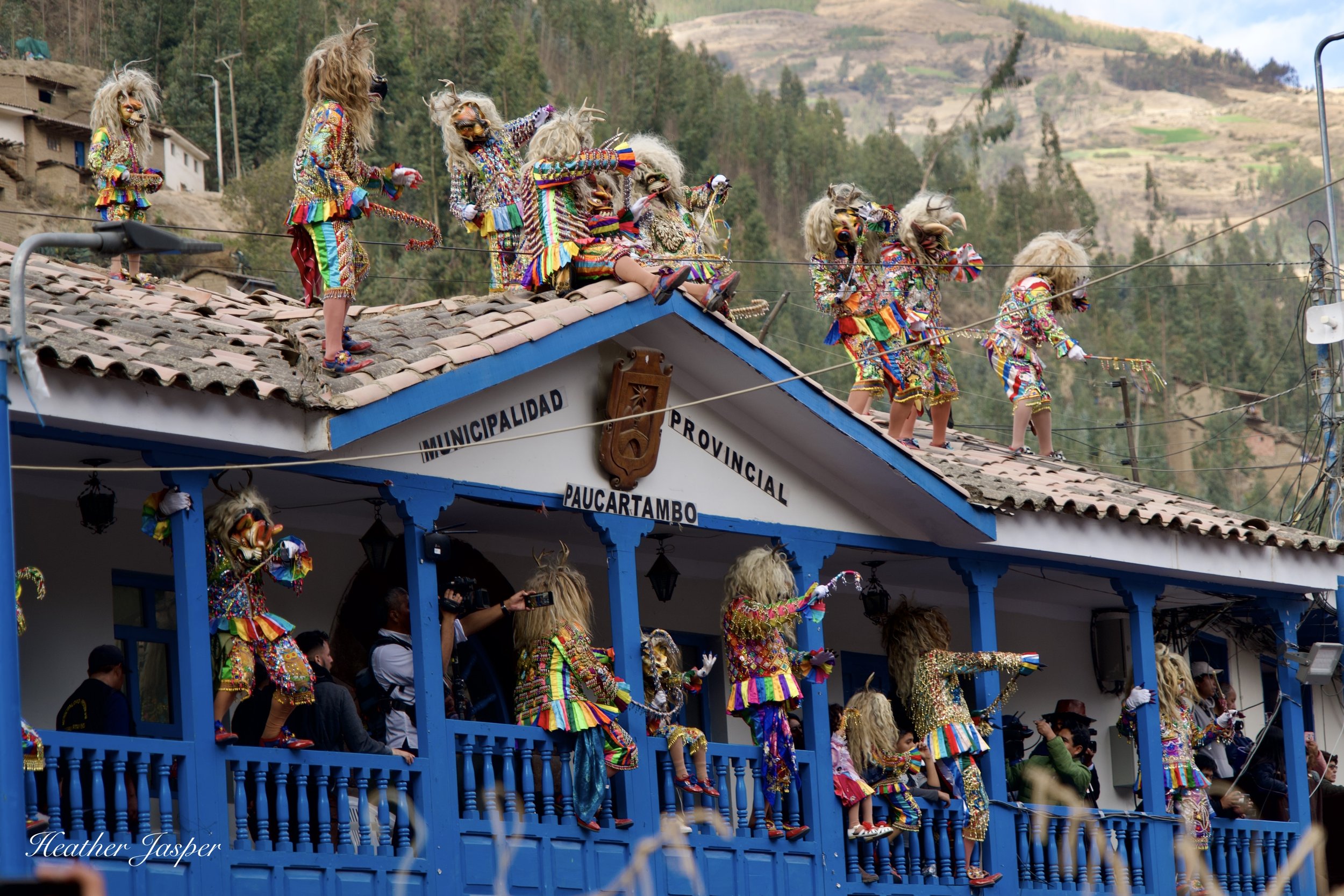

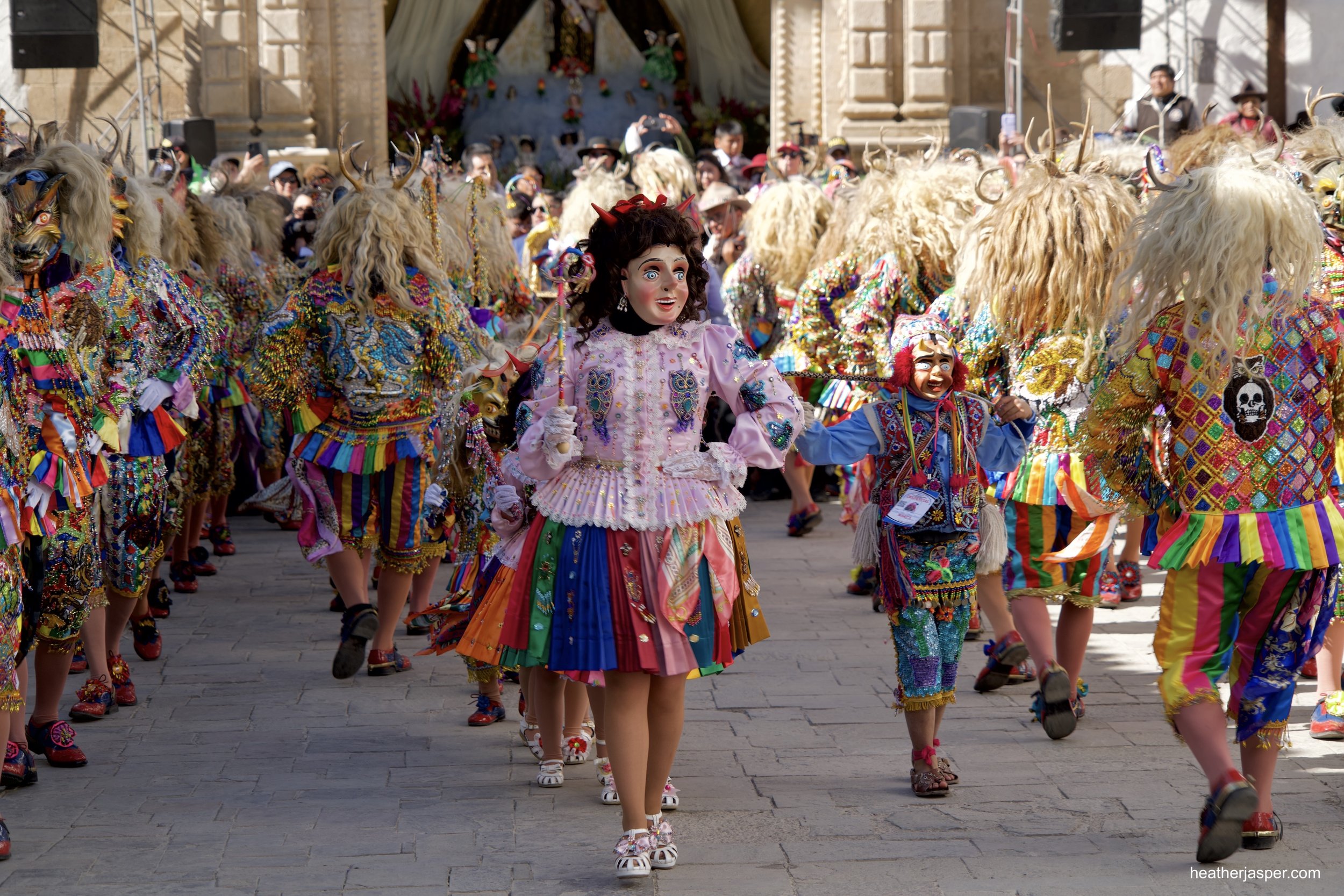
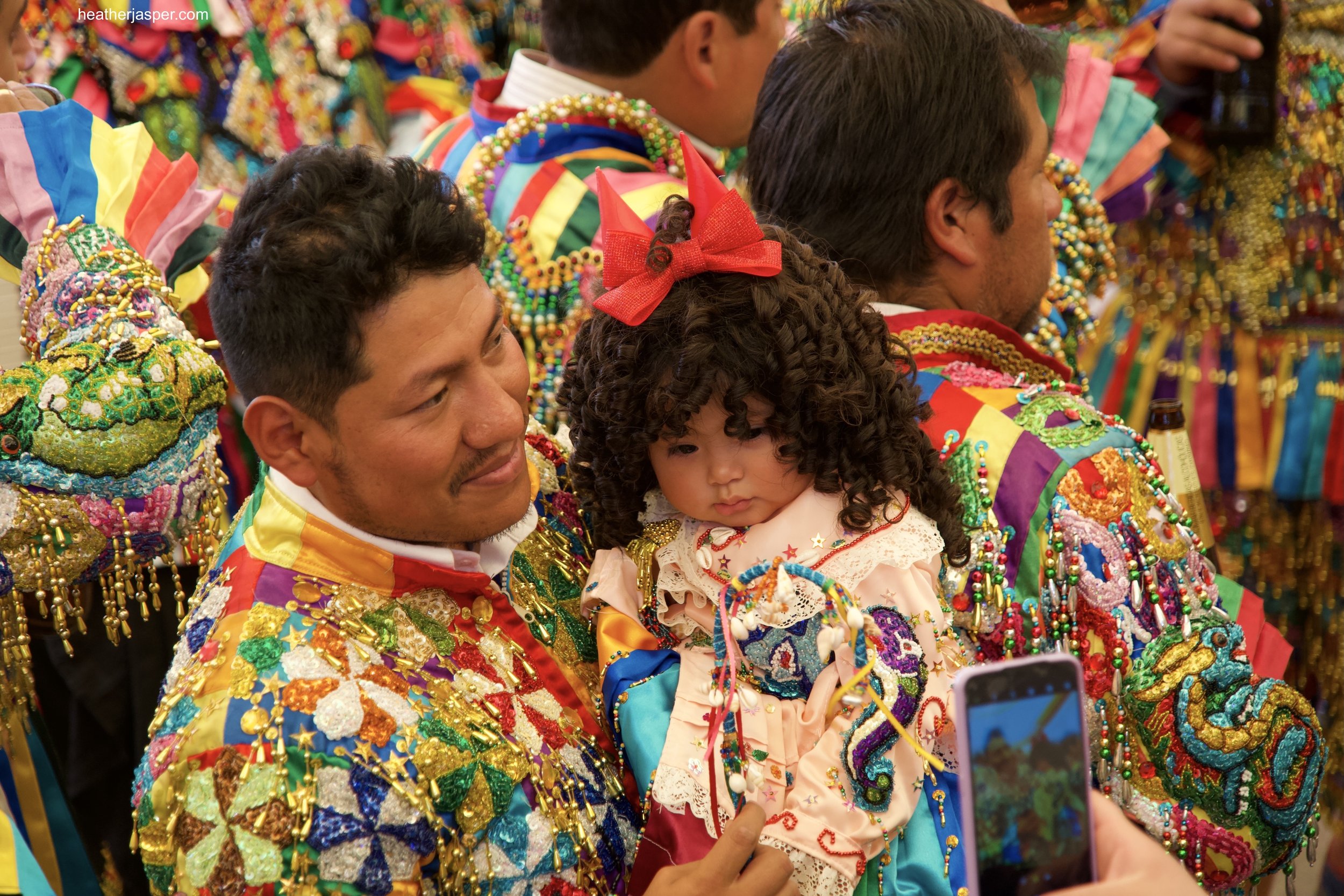
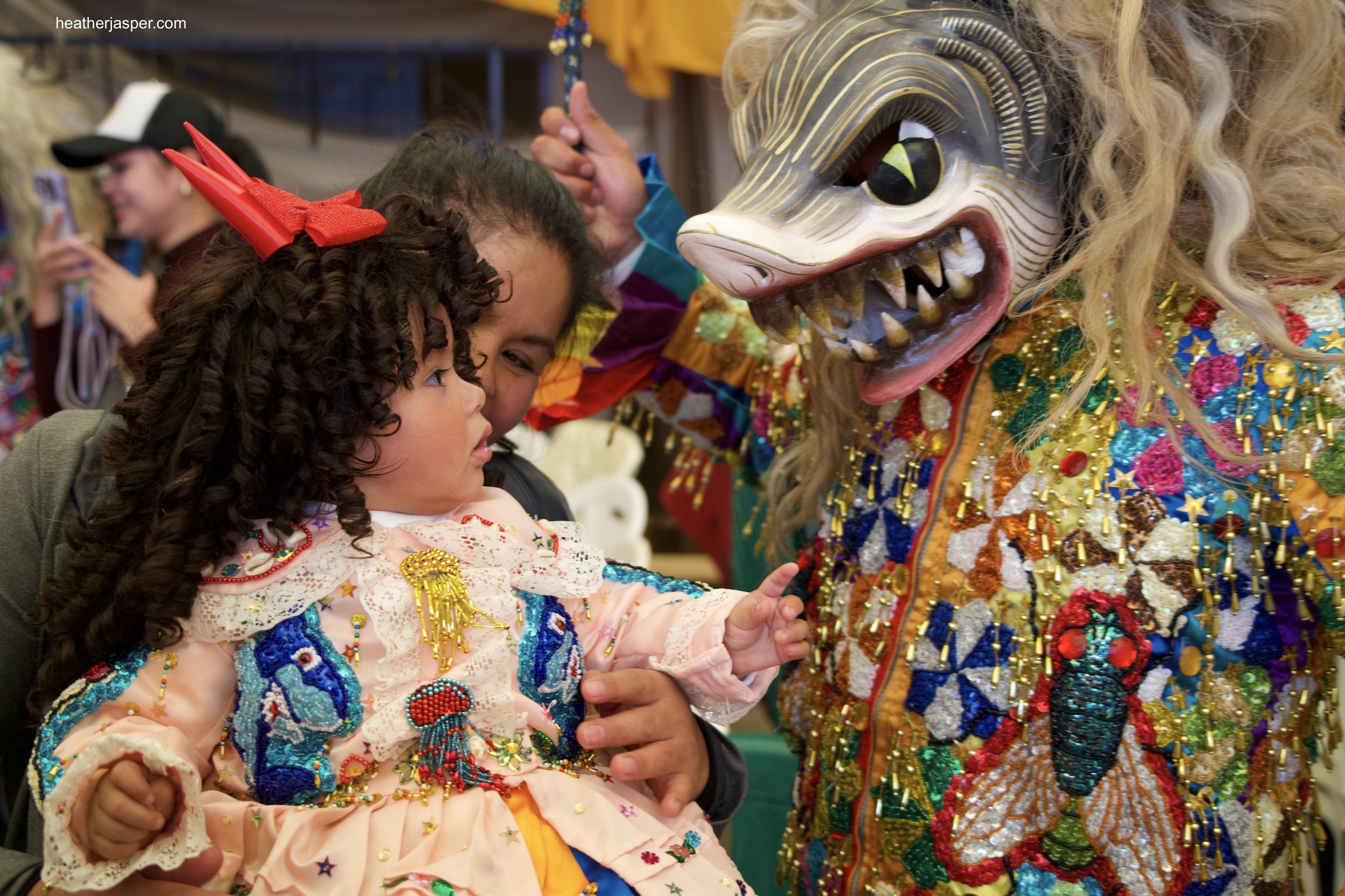
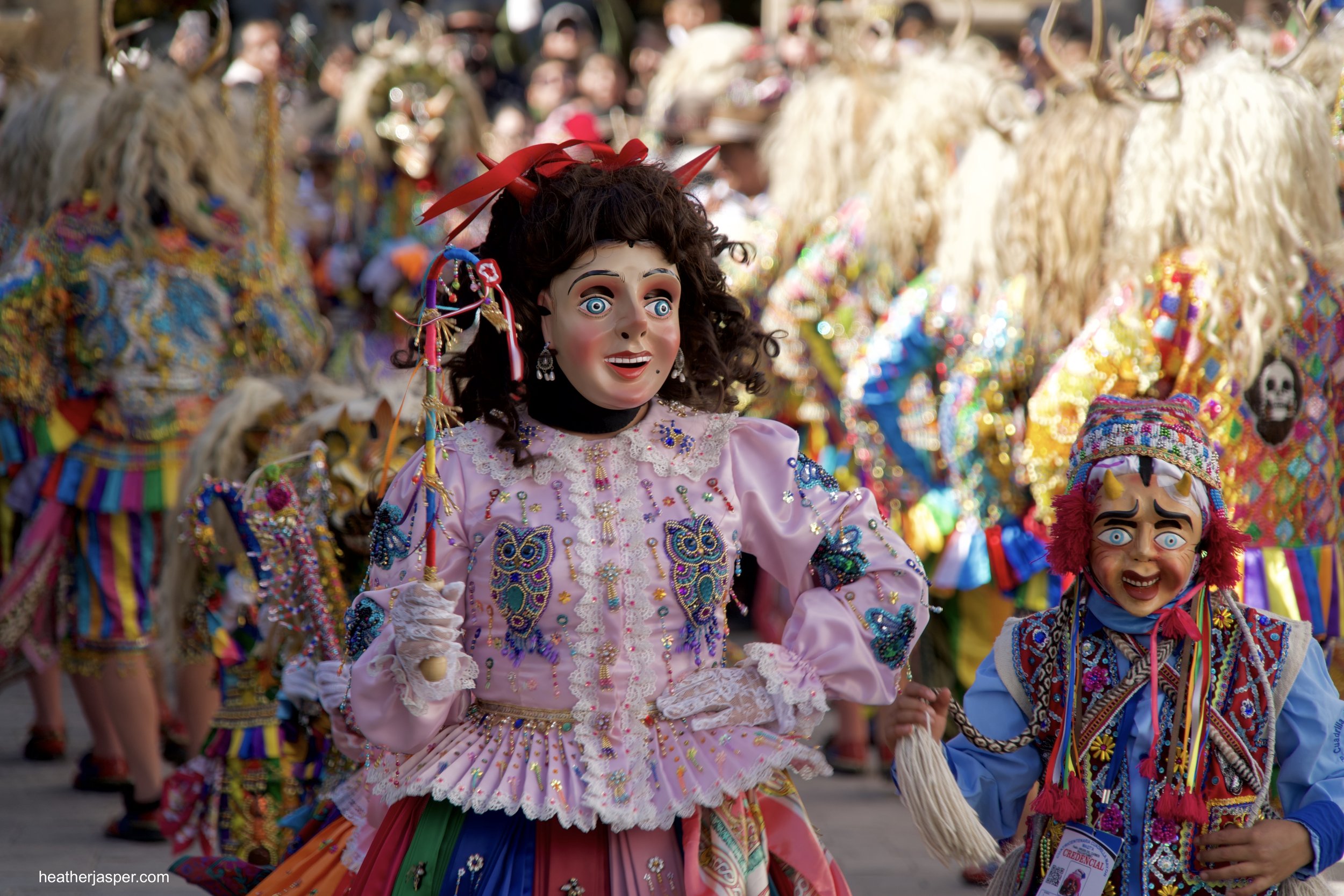
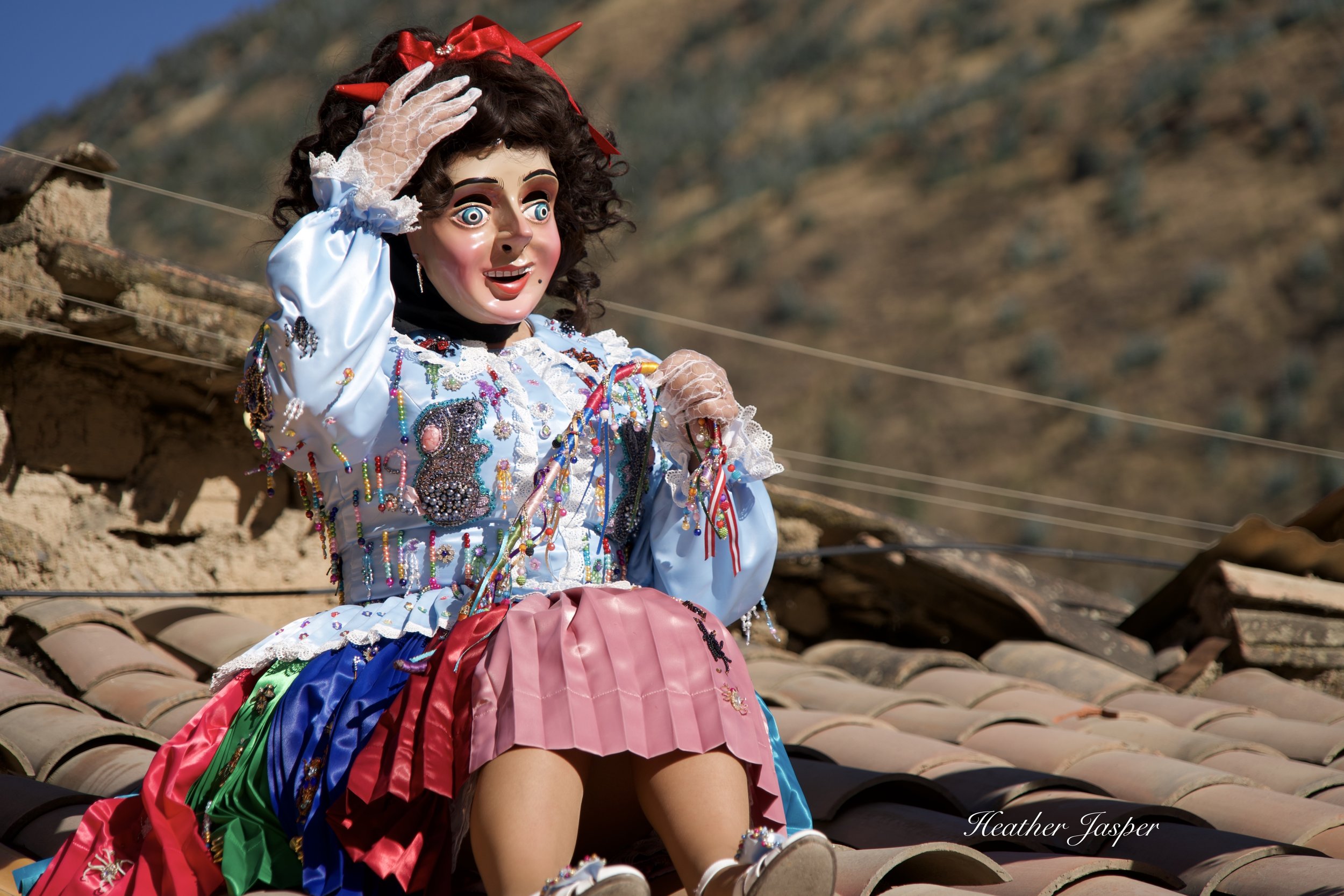

Read my blogs about my time at Paucartambo in 2023 and Paucartambo in 2024. Both years I spent most of my time with the Saqra, the danza that dresses like wild creatures and whose role is to scare spectators. The Spanish translated the Quechua word Saqra as “devil” but they’re more like troublemakers than devils. Inca and Quechua culture didn’t have devils as the Europeans know them. One of the most emblematic moments of the festividad de la Virgen del Carmen is when the Saqra get up on the roofs around town to lean out towards the Virgin when she passes by. They try to hook her with their “garabatos” and when they ultimately fail to capture her, they lay down on the rooftops and pretend to be vanquished by her power.
In July 2025 I will be following a different danza, the Qhapaq Negro. They have a completely different role from the Saqras. The Qhapaq Negro are the “slaves” of the Virgin and they carry chains around their waists and black masks to symbolize the enslaved Africans who lived in and around Paucartambo during Spanish colonization, many of whom were very devoted to the Virgin of Carmen.







